Facts About Tasmanian Tigers

The Tasmanian tiger, also called Tasmanian wolf and thylacine, was neither a tiger nor a wolf, but a marsupial, and closely related to the Tasmanian devil. The last known Tasmanian tiger died in 1936, but hundreds of unconfirmed sightings have spurred investigations into whether the animal still lives.
Extinction marked the demise of the only member of its family, Thylacinidae, and the world's largest marsupial (pouched) carnivore. Tasmanian tigers were 39 to 51 inches (100 to 130 centimeters) long, and the tail added 20 to 26 inches (50 to 65 cm) to its length. They weighed 33 to 66 lbs. (15 to 30 kilograms), according to Encyclopedia Britannica . Tasmanian tigers looked like dogs with yellowish fur. They had black stripes across the body, and a thin, almost rodent-like tail.

Fossil evidence suggests that the modern thylacine — Thylacinus cynocephalus , whose name means "dog-headed pouched one" — emerged about 4 million years ago. Once widespread across Australia, the animal disappeared everywhere except Tasmania about 2,000 years ago, according to the National Museum of Australia (NMA). The disappearance was likely due to competition with dingos . Modern people discovered the animal in Tasmania, thus its name.

Habits
While it had a vicious appearance, Tasmanian tigers were actually very timid and could be captured without a fight. They would often die suddenly, perhaps from going into shock, according to the Australian government .
Researchers think that Tasmanian tigers located prey by scent and hunted, for the most part, at night. They would hunt alone or with a partner. They were mostly quiet creatures, but, when hunting, they would make a yapping noise, much like a small dog, according to the Tasmania Parks and Wildlife Service .

Tasmanian tigers were meat eaters. They hunted kangaroos , sheep and wallabies, reportedly, though there is little research into the eating habits of these animals. These animals could open their mouths almost 90 degrees, according to the Encyclopedia Britannica. However, a study in the August 2011 Journal of Zoology found that the Tasmanian tiger wouldn’t have been able to kill large prey because of its weak jaw. The authors thought that the animal would have hunted for small marsupials like wallabies and possums.
Like other marsupials, Tasmanian tigers had pouches. Their pouches' opening faced their hind legs, though. In her pouch, a female could carry two to four hairless babies at once. As the babies grew, the pouch expanded to accommodate them.
After the babies became older, the mother would leave the young in a lair, such as a cave or hollowed log, to go hunting.
Thylacines likely lived five to seven years in the wild, though they lived up to nine years in captivity.
Classification/taxonomy
Here is the taxonomy information for the Tasmanian tiger, according to the Integrated Taxonomic Information System (ITIS):
Kingdom : Animalia Subkingdom : Bilateria Infrakingdom : Deuterostomia Phylum : Chordata Subphylum : Vertebrata Infraphylum : Gnathostomata Superclass : Tetrapoda Class : Mammalia Subclass : Theria Infraclass : Metatheria Order : Dasyuromorphia Family : Thylacinidae Genus : Thylacinus Species : Thylacinus cynocephalus
Extinct, or not?
It is estimated there were around 5,000 thylacines in Tasmania when Europeans settled in the area, according to National Museum Australia . In 1830, the Van Diemens Land Co. introduced bounty on the animal, and in 1888 the Tasmanian Parliament placed a bounty of 1 pound ($1.25) on thylacines, according to the Tasmania Parks and Wildlife Service. The last wild Tasmanian tiger was killed between 1910 and 1920. In 1936, the last known thylacine, named Benjamin, died in captivity in the Beaumaris Zoo in Hobart, Australia. This was just two months after the Australian government made the animal a protected species.
The International Union for Conservation of Nature lists Tasmanian tigers as extinct . However, there have been hundreds of sighting of the Tasmanian tiger over the last 100 years or so. In fact, some of the latest sightings have spurred an investigation into their current existence .
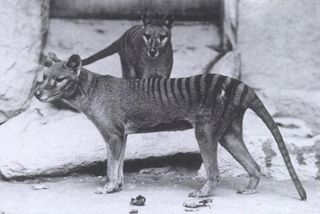
Other facts
A research team at the Australian Museum launched the Thylacine Cloning Project in 1999 to attempt to clone a Tasmanian tiger. The research team obtained tissue samples from a female thylacine that had been preserved in alcohol for over 100 years. They were able to extract DNA, and by 2002, they had replicated individual genes. However, in 2005, researchers determined that the quality of the DNA was too poor to work with, and the project was scrapped.
Additional resources
- NPR: Back from The Dead? Reported Sightings Fuel Hope for Return Of Tasmanian Tigers
- Mental Floss: 10 Wild Facts About the (Now-Extinct) Tasmanian Tiger
- The Thylacine Museum: A Natural History of the Tasmanian Tiger
Sign up for the Live Science daily newsletter now
Get the world’s most fascinating discoveries delivered straight to your inbox.

Why do cats have bald spots in front of their ears?
Fishing cats seen feasting on chicks at the tops of 26-foot-tall trees in Bangladesh
Tiny 'sungrazer' comet discovered, photographed and destroyed — all during historic total solar eclipse
Travelling Tasmanian Tigers
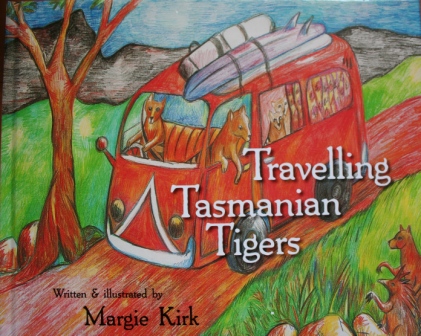
- Add to cart Add to wish list
- Ask a question about this product
- Customers also bought
- Customer feedback
- Just Tassie Books
- Military - Australia
- Military - General
Cart is empty
- New Arrivals
- Apr 12, 2024 Peter Manchester's Guide to Tasmanian Fossils
- Mar 9, 2024 Transplantation - Jocelyn HC Thomas & Charlotte Partridge
- Mar 9, 2024 The East Coasters - hardcover
- Products Map
- My Shopping Cart
- Return to Main site
- Terms & Conditions
- Privacy statement
- PRIVACY STATEMENT

SHOP ONLINE

Travelling Tasmanian Tigers
$ 25.00
Margie Kirk’s fantastic artwork and beautiful words combine to take readers on a tour of 14 Tasmanian towns where thylacines make friends with the native wildlife – from wombats in Waratah, echidnas in Eddystone, wedge-tails over Wineglass Bay to possums in Port Arthur, quolls in Queenstown and swans in Strahan.
Additional information
- Reviews (0)
There are no reviews yet.
Your email address will not be published. Required fields are marked *
Your review *
Name *
Email *
Save my name, email, and website in this browser for the next time I comment.
- Share On Facebook
- Tweet This Product
- Pin This Product
- Email This Product
Related products
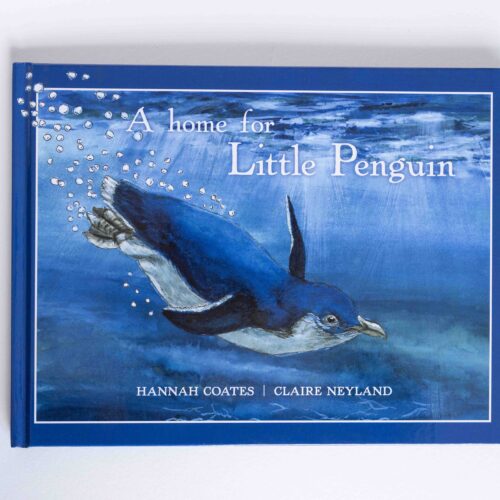
A Home for Little Penguin
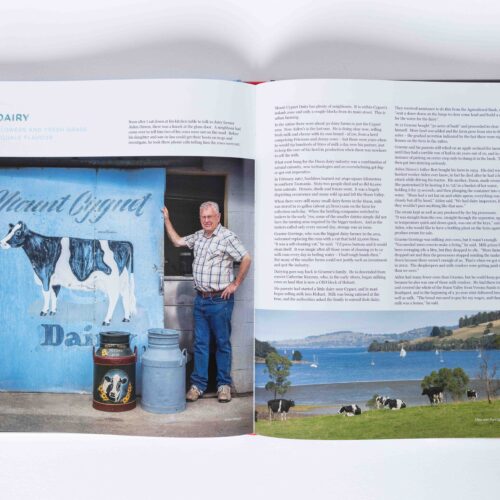
A Table in the Valley

Bee Friendly Garden
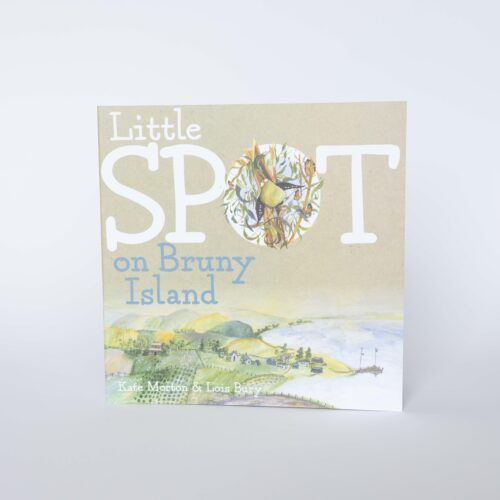
Little Spot
Shop by category.
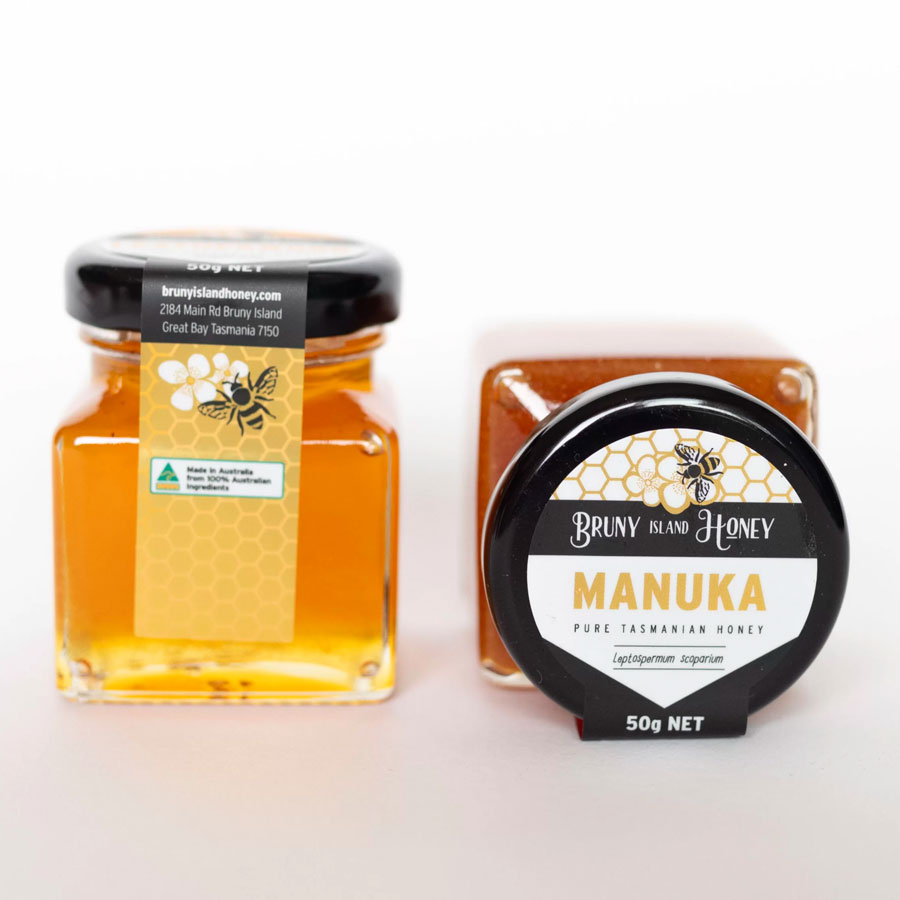
PERSONAL CARE
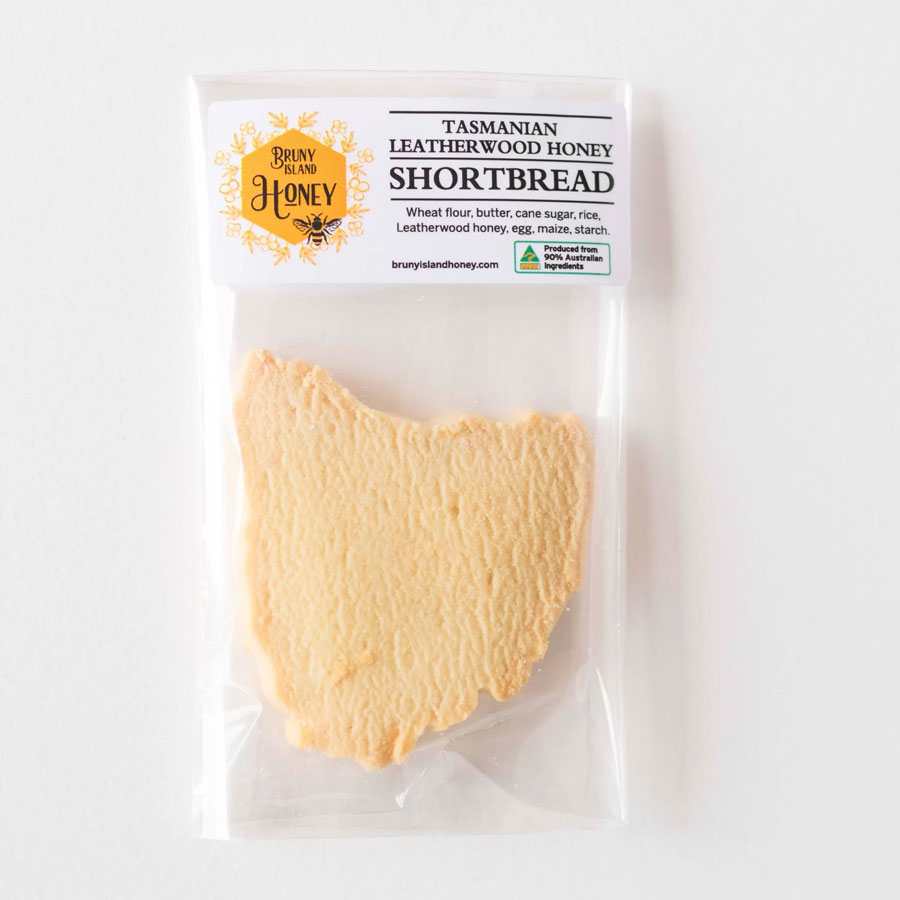
SWEET TREATS
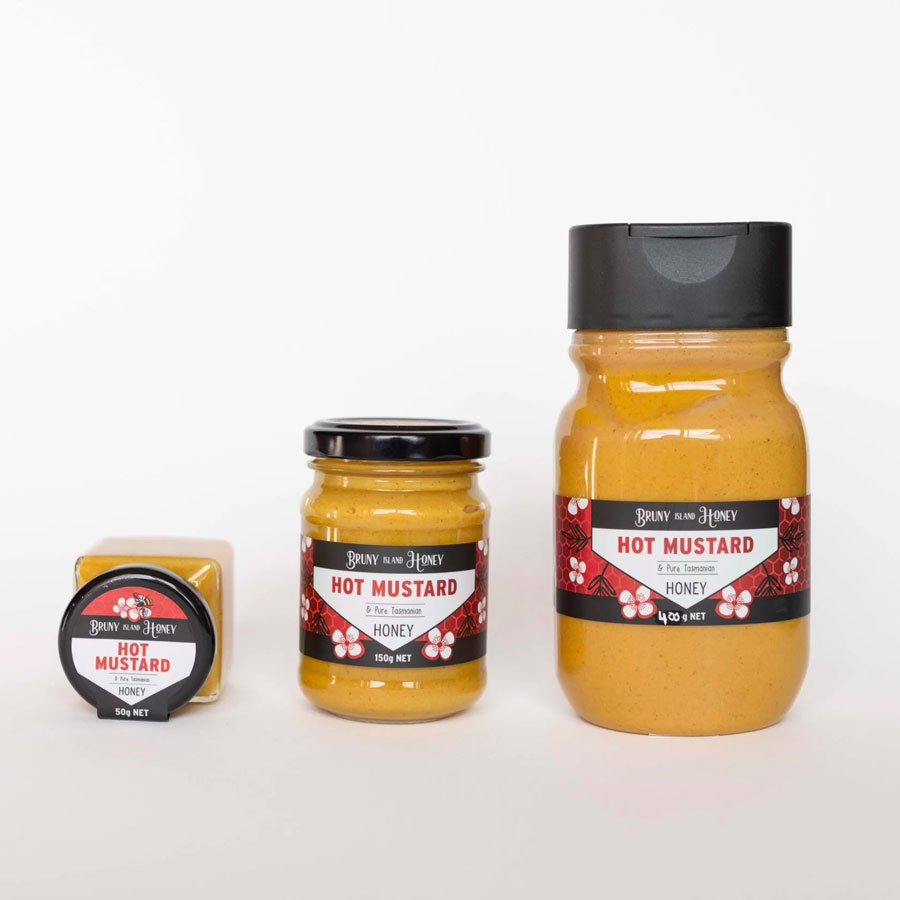
The Honey Pot 2273 Huon Highway Huonville TAS 7109
0475 893 506
Bruny Island Honey 2184 Bruny Island Main Rd Great Bay TAS 7150
Liquor Licence: 92824 Bruny Island Honey Liquor Licence: 84922 The Honey Pot ABN: 11632785687 Apiary Registration: 156
Shipping and Returns
Privacy Policy
Site © 2012-2024 Tasiliquidgold. Designed by Finch design & built by Design ID
T: 0475 893 506 Email us
Site ©2012-2024 Tasiliquidgold. Designed by Finch design & built by Design ID
Shipping and Returns | Privacy Policy
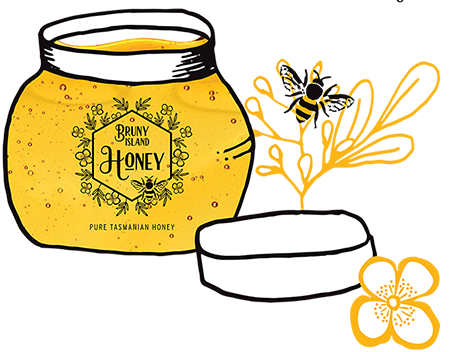
get connected
Accessibility, accessibility modes, readable experience, visually pleasing experience, easy orientation.
The Honey Pot & Bruny Island Honey Accessibility Statement
Accessibility Statement
- thehoney-pot.com
- April 13, 2024
Compliance status
We firmly believe that the internet should be available and accessible to anyone, and are committed to providing a website that is accessible to the widest possible audience, regardless of circumstance and ability.
To fulfill this, we aim to adhere as strictly as possible to the World Wide Web Consortium’s (W3C) Web Content Accessibility Guidelines 2.1 (WCAG 2.1) at the AA level. These guidelines explain how to make web content accessible to people with a wide array of disabilities. Complying with those guidelines helps us ensure that the website is accessible to all people: blind people, people with motor impairments, visual impairment, cognitive disabilities, and more.
This website utilizes various technologies that are meant to make it as accessible as possible at all times. We utilize an accessibility interface that allows persons with specific disabilities to adjust the website’s UI (user interface) and design it to their personal needs.
Additionally, the website utilizes an AI-based application that runs in the background and optimizes its accessibility level constantly. This application remediates the website’s HTML, adapts Its functionality and behavior for screen-readers used by the blind users, and for keyboard functions used by individuals with motor impairments.
If you’ve found a malfunction or have ideas for improvement, we’ll be happy to hear from you. You can reach out to the website’s operators by using the following email
Screen-reader and keyboard navigation
Our website implements the ARIA attributes (Accessible Rich Internet Applications) technique, alongside various different behavioral changes, to ensure blind users visiting with screen-readers are able to read, comprehend, and enjoy the website’s functions. As soon as a user with a screen-reader enters your site, they immediately receive a prompt to enter the Screen-Reader Profile so they can browse and operate your site effectively. Here’s how our website covers some of the most important screen-reader requirements, alongside console screenshots of code examples:
Screen-reader optimization: we run a background process that learns the website’s components from top to bottom, to ensure ongoing compliance even when updating the website. In this process, we provide screen-readers with meaningful data using the ARIA set of attributes. For example, we provide accurate form labels; descriptions for actionable icons (social media icons, search icons, cart icons, etc.); validation guidance for form inputs; element roles such as buttons, menus, modal dialogues (popups), and others. Additionally, the background process scans all the website’s images and provides an accurate and meaningful image-object-recognition-based description as an ALT (alternate text) tag for images that are not described. It will also extract texts that are embedded within the image, using an OCR (optical character recognition) technology. To turn on screen-reader adjustments at any time, users need only to press the Alt+1 keyboard combination. Screen-reader users also get automatic announcements to turn the Screen-reader mode on as soon as they enter the website.
These adjustments are compatible with all popular screen readers, including JAWS and NVDA.
Keyboard navigation optimization: The background process also adjusts the website’s HTML, and adds various behaviors using JavaScript code to make the website operable by the keyboard. This includes the ability to navigate the website using the Tab and Shift+Tab keys, operate dropdowns with the arrow keys, close them with Esc, trigger buttons and links using the Enter key, navigate between radio and checkbox elements using the arrow keys, and fill them in with the Spacebar or Enter key.Additionally, keyboard users will find quick-navigation and content-skip menus, available at any time by clicking Alt+1, or as the first elements of the site while navigating with the keyboard. The background process also handles triggered popups by moving the keyboard focus towards them as soon as they appear, and not allow the focus drift outside it.
Users can also use shortcuts such as “M” (menus), “H” (headings), “F” (forms), “B” (buttons), and “G” (graphics) to jump to specific elements.
Disability profiles supported in our website
- Epilepsy Safe Mode: this profile enables people with epilepsy to use the website safely by eliminating the risk of seizures that result from flashing or blinking animations and risky color combinations.
- Visually Impaired Mode: this mode adjusts the website for the convenience of users with visual impairments such as Degrading Eyesight, Tunnel Vision, Cataract, Glaucoma, and others.
- Cognitive Disability Mode: this mode provides different assistive options to help users with cognitive impairments such as Dyslexia, Autism, CVA, and others, to focus on the essential elements of the website more easily.
- ADHD Friendly Mode: this mode helps users with ADHD and Neurodevelopmental disorders to read, browse, and focus on the main website elements more easily while significantly reducing distractions.
- Blindness Mode: this mode configures the website to be compatible with screen-readers such as JAWS, NVDA, VoiceOver, and TalkBack. A screen-reader is software for blind users that is installed on a computer and smartphone, and websites must be compatible with it.
- Keyboard Navigation Profile (Motor-Impaired): this profile enables motor-impaired persons to operate the website using the keyboard Tab, Shift+Tab, and the Enter keys. Users can also use shortcuts such as “M” (menus), “H” (headings), “F” (forms), “B” (buttons), and “G” (graphics) to jump to specific elements.
Additional UI, design, and readability adjustments
- Font adjustments – users, can increase and decrease its size, change its family (type), adjust the spacing, alignment, line height, and more.
- Color adjustments – users can select various color contrast profiles such as light, dark, inverted, and monochrome. Additionally, users can swap color schemes of titles, texts, and backgrounds, with over seven different coloring options.
- Animations – person with epilepsy can stop all running animations with the click of a button. Animations controlled by the interface include videos, GIFs, and CSS flashing transitions.
- Content highlighting – users can choose to emphasize important elements such as links and titles. They can also choose to highlight focused or hovered elements only.
- Audio muting – users with hearing devices may experience headaches or other issues due to automatic audio playing. This option lets users mute the entire website instantly.
- Cognitive disorders – we utilize a search engine that is linked to Wikipedia and Wiktionary, allowing people with cognitive disorders to decipher meanings of phrases, initials, slang, and others.
- Additional functions – we provide users the option to change cursor color and size, use a printing mode, enable a virtual keyboard, and many other functions.
Browser and assistive technology compatibility
We aim to support the widest array of browsers and assistive technologies as possible, so our users can choose the best fitting tools for them, with as few limitations as possible. Therefore, we have worked very hard to be able to support all major systems that comprise over 95% of the user market share including Google Chrome, Mozilla Firefox, Apple Safari, Opera and Microsoft Edge, JAWS and NVDA (screen readers).
Notes, comments, and feedback
Despite our very best efforts to allow anybody to adjust the website to their needs. There may still be pages or sections that are not fully accessible, are in the process of becoming accessible, or are lacking an adequate technological solution to make them accessible. Still, we are continually improving our accessibility, adding, updating and improving its options and features, and developing and adopting new technologies. All this is meant to reach the optimal level of accessibility, following technological advancements. For any assistance, please reach out to
- Science & Environment
- History & Culture
- Opinion & Analysis
- Destinations
- Activity Central
- Creature Features
- Earth Heroes
- Survival Guides
- Travel with AG
- Travel Articles
- About the Australian Geographic Society
- AG Society News
- Sponsorship
- Fundraising
- Australian Geographic Society Expeditions
- Sponsorship news
- Our Country Immersive Experience
- AG Nature Photographer of the Year
- Web Stories
- Adventure Instagram
Home Topics Wildlife Watch footage of last-known surviving Tasmanian tiger remastered and in colour
Watch footage of last-known surviving Tasmanian tiger remastered and in colour

The National Film and Sound Archive (NFSA) has released never-before-seen remastered and colourised footage of the last known Tasmanian tiger.
The original black-and-white footage, shot in 1933 by Australian zoologist and naturalist David Fleay, was recently scanned by the NFSA to 4K archival standards and sent to colourisation experts in France.
Due to the lack of original colour pictures or footage, the French colourists relied on written descriptions of the thylacine.
“These descriptions, combined with scientific drawings, and recent 3D colour renderings of the animal, meant we were able to get a clear idea of what the thylacine’s fur should look like,” says lead colourist Samuel François-Steininger.
“I have worked on more than 100 archive-based documentary films and series, most of them very complex. But for the thylacine, I faced a different kind of challenge and responsibility: I had to take care of the rare footage, and pay tribute to the last representative of a species, which disappeared 85 years ago.”

NFSA Curator Vick Gwyn says the remastering and colouring process has brought greater detail to the image and will continue to invite re-imagining and reconnection to the footage.
“Through the observance of full archival digital preservation protocols, we hope that people will apply their own perception and stimulate understanding of this remarkable animal, as Samuel has done,” Vick says.
The footage has been released in honour of National Threatened Species Day, which marks the anniversary of the death of ‘Benjamin’ the last known thylacine featured in the footage.

Even as the fusion era dawns, Australia is still in the Steam Age
Steam locomotives clattering along railway tracks. Paddle steamers churning down the Murray. Dreadnought battleships powered by steam engines.

Ever heard of a moonbird?
The strong connection between King Island’s people and its moonbirds is celebrated by an arts festival bringing culture and conservation together.

Teaching toads: how we can save native species from cane toads
Australia can claim more than its fair share of environmental blunders, but the introduction of cane toads (Rhinella marina) in 1935 surely ranks as one of the worst.
Watch Latest Web Stories
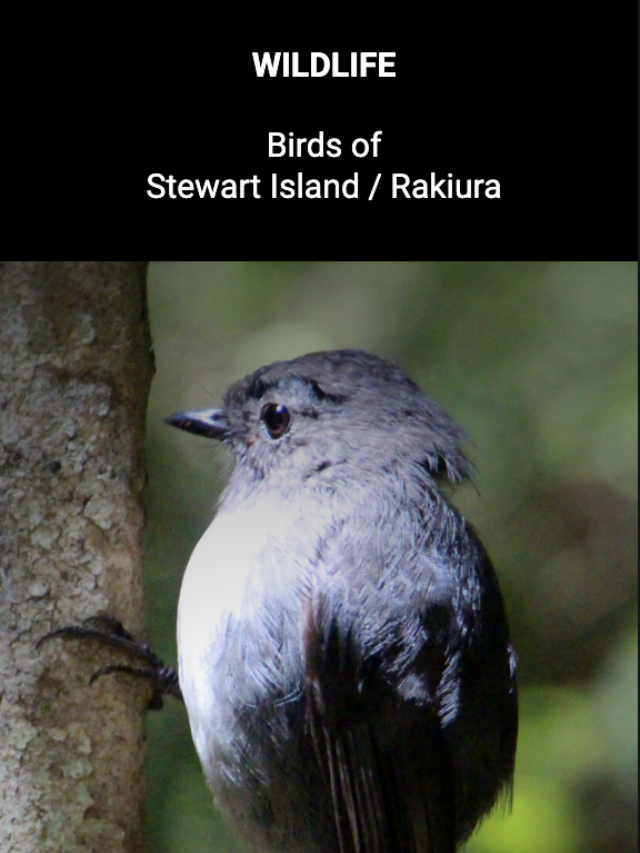
Birds of Stewart Island / Rakiura
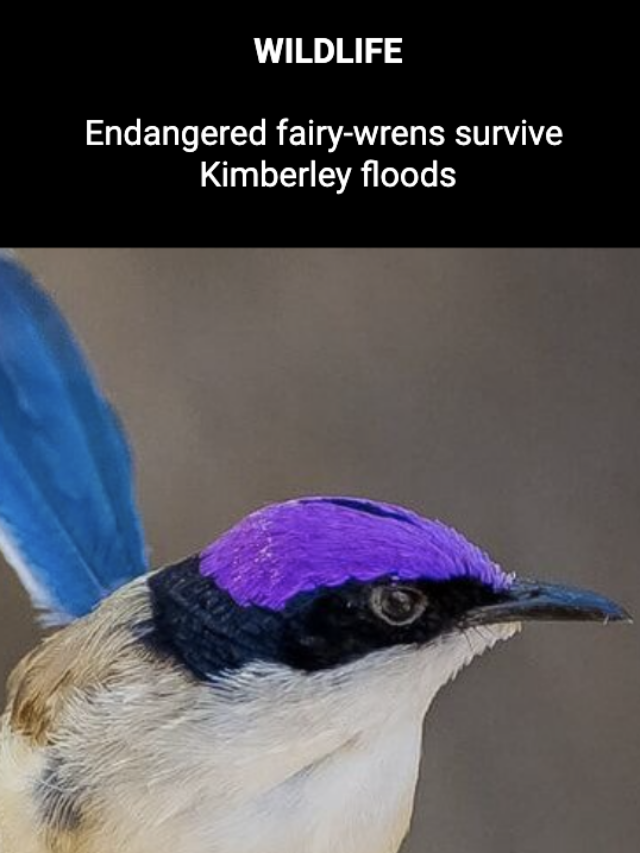
Endangered fairy-wrens survive Kimberley floods
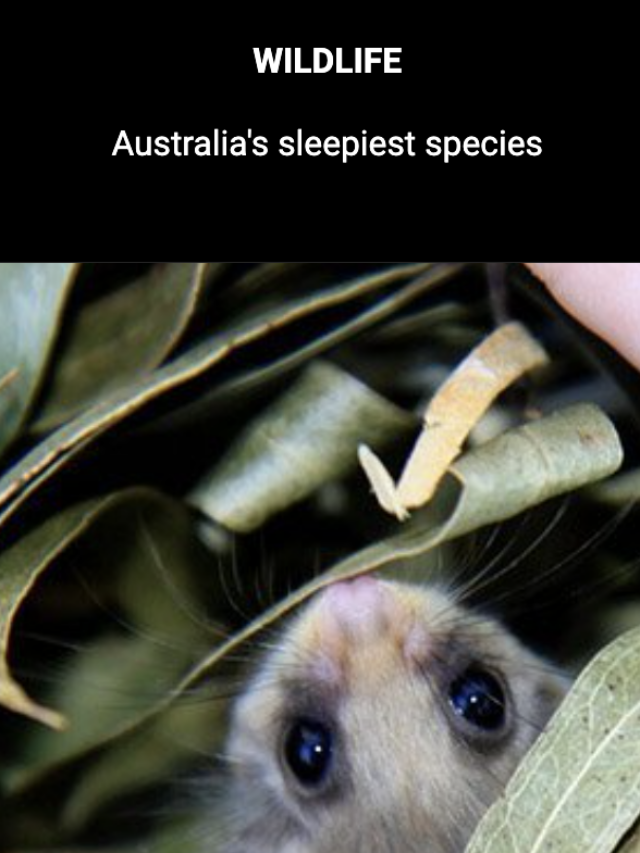
Australia’s sleepiest species

2024 Calendars & Diaries - OUT NOW
Our much loved calendars and diaries are now available for 2024. Adorn your walls with beautiful artworks year round. Order today.

In stock now: Hansa Soft Toys and Puppets
From cuddly companions to realistic native Australian wildlife, the range also includes puppets that move and feel like real animals.

StoryWalk Launch – Travelling Tasmanian Tigers @ Dru Point, Margate, Tasmania
We will be launching the latest StoryWalk at Dru Point. Travelling Tasmanian Tigers is a wonderful book highlighting the adventures of the travelling Tasmanian Tigers, visiting various animals in beautiful places around Tasmania.
The launch will include a Welcome to Country, the launch and thanking of sponsors, and introduction of the author and illustrator/artist, Margie Kirk, by Kingston Library. There will be the opportunity for a guided StoryWalk by the author and additional library staff will be on hand to also take groups along the StoryWalk.
You can do a self guided tour of the book at anytime. There is much to explore and enjoy at Dru Point Park, Margate.
We look forward to seeing you.
#TasmaniaReads #AustraliaReads #KingstonLibrary #LibrariesTasmania
Thank you to the Friends of the Library Kingston and Kingborough Council Community Grants for supporting this project, along with Libraries Tasmania. We would also like to acknowledge the support of the Channel Men’s Shed.
The StoryWalk concept was created by Anne Ferguson of Montpelier, VT, USA.
#Families #Parents&Carers
EVENT DETAILS
- Date: 10 March 2023
- Start time: 10:00 am
- End time: 11:00 am
- Venue name: Dru Point, Margate
- Venue address: Dru Point, Margate, 7050
- Free or paid event: Free
- Organisation: Kingston Library, Libraries Tasmania
- Age Group: All Ages
- LGA / Region: Kingborough
- Back to all Reading Hour events
Australia Reads is made possible thanks to the amazing support of our major stakeholders and partners.

We acknowledge Aboriginal and Torres Strait Islander peoples as the traditional custodians of the lands where we live and work. We pay our respect to Elders, past, present and emerging, and honour the sharing of traditional stories passed down through generations.

© 2024 AUSTRALIA READS
- - AUSTRALIAN READING HOUR
- - AUTHOR DIRECTORY
- - LITERARY CALENDAR
- - LOGO MAKER
- - SHARABLE ASSETS
- - RESEARCH REVIEW
- - NATIONAL READING SURVEY
- - LIVE LITERATURE RESEARCH
SHOP ONLINE NOW

- Current Exhibition
- Art & Photography
- Books & Guides
- Design & Homewares
- Gifts & Stationery
- Information for 2023
- Threatened Species Project Artworks
- Your Cart is Empty
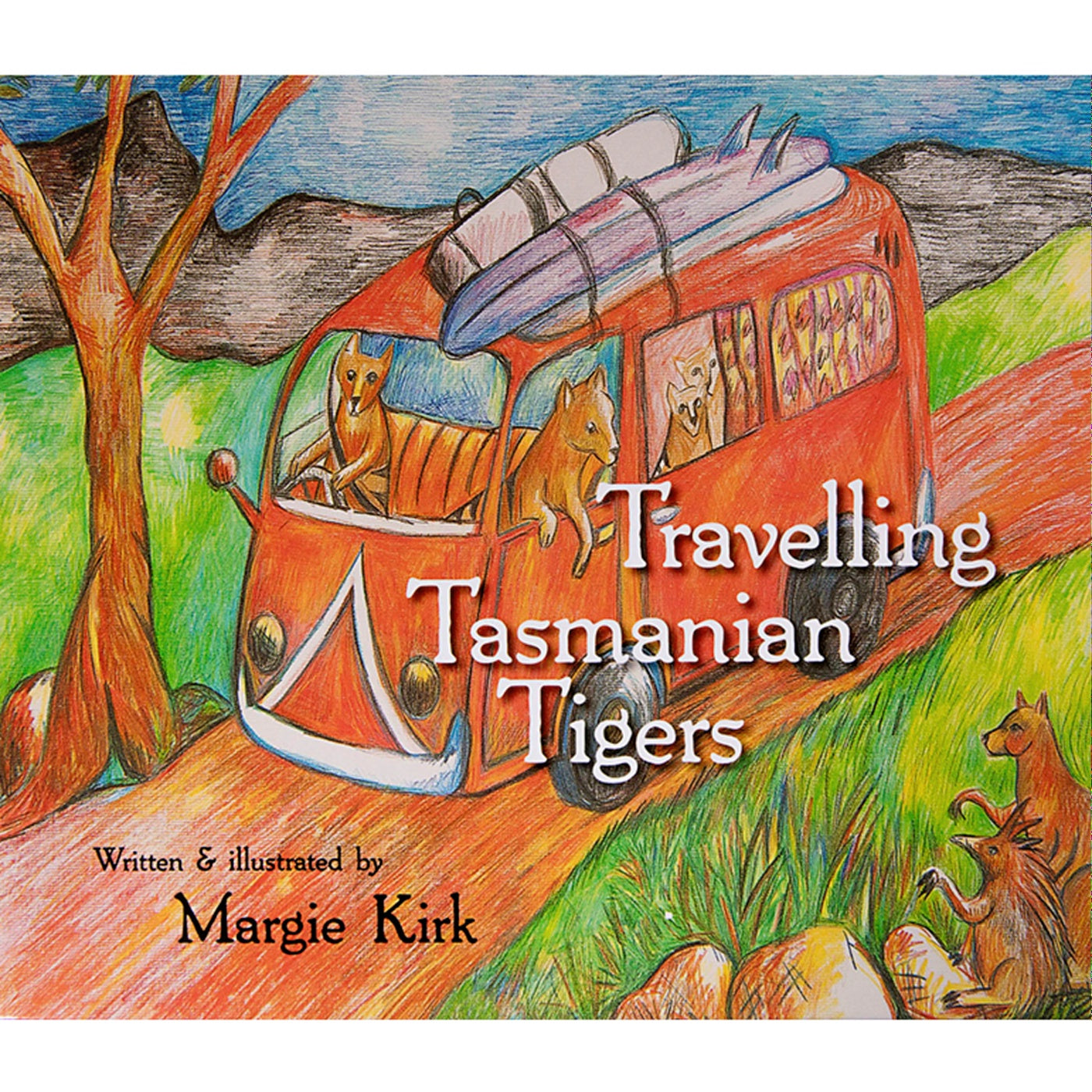
OUT OF PRINT Travelling Tasmanian Tigers
Sold Out $22.68
Notify me when this product is available:
Travelling Tasmanian Tigers Margie Kirk Forty South Publishing Hardcover, 32 Pages Margie Kirk's fantastic artwork and beautiful words combine to take readers on a tour of 14 Tasmanian towns where thylacines make friends with the native wildlife - from wombats in Waratah, echidnas in Eddystone, wedge-tails over Wineglass Bay to possums in Port Arthur, quolls in Queenstown and swans in Strahan. "We see so many children who can instantly identify a tiger, a lion or even a Tyrannosaurus rex, but do not know what a bettong, quoll or bandicoot are. It is crucial that we introduce children to these animals at a young age so they can begin to identify, and develop a passion for, the animals living in their own backyards." - Greg Irons, Director, Bonorong Wildlife Sanctuary
Collections: Books & Guides , Children's Books
Type: Books & Guides
You may also like
We are OPEN !
Mon - Fri 10am - 5pm Sat 9am - 4pm Sunday/Public Holidays 10-3pm Closed Christmas day
Sign up to get the latest on sales, new releases and more…
© 2024 Wild Island Tasmania . Powered by Shopify
STAY IN TOUCH
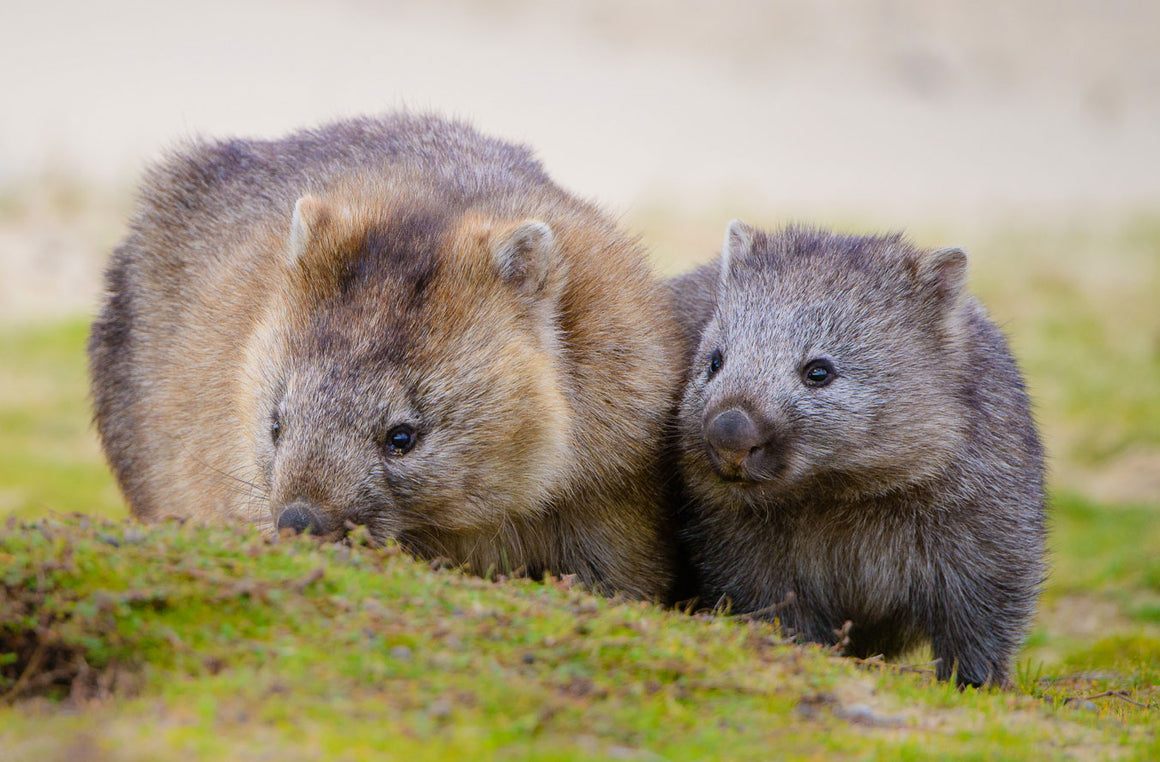
Animal Diversity Web
- About Animal Names
- Educational Resources
- Special Collections
- Browse Animalia
More Information
Additional information.
- Encyclopedia of Life
Thylacinus cynocephalus Tasmanian wolf (Also: thylacine)

Geographic Range
Although Tasmanian wolves (also known as Tasmanian tigers or thylacines) are considered extinct, their original prehistoric range was thought to extend throughout much of mainland Australia and Papua New Guinea. This range has been confirmed through various cave drawings, such as those found by Wright in 1972, and bone collections that have been radiocarbon dated to 180 years before present. Tasmanian wolves are now considered extinct. Thylacines were last known to inhabit Tasmania, where they were hunted to extinction. ( Archer, 1974 )
- Biogeographic Regions
- Other Geographic Terms
- island endemic
Although the preferred habitat of Tasmanian wolves was never thoroughly described, remains have been collected throughout Australasian coastal regions. From colonial times until their extinction, Tasmanian wolves were found throughout Tasmania. They were most often seen in hilly country, resting during the day in forest and scrub, and hunt during the afternoon and evening in bordering thickets. Other descriptions suggest Tasmanian wolves were found in forested areas and grasslands. These observations may not represent the native preferences, though, because Tasmanian wolves were actively persecuted during this time and that may have effected their behavior. The last remaining populations were restricted to dense rainforests in Tasmania. Tasmanian wolf lairs were located mainly in hollow logs or rock outcroppings located in hilly areas that were adjacent to open areas, such as grasslands. ( Brandle, 1972 ; Le Souef and Burrell, 1926 ; Lord, 1927 ; Nowak and Paradiso, 1983 )
- Habitat Regions
- terrestrial
- Terrestrial Biomes
- savanna or grassland
- scrub forest
- Other Habitat Features
- agricultural
- Average elevation 330 m 1082.68 ft
Physical Description
Tasmanian wolves had an overall body length of approximately 1230 to 1950 mm, measuring 990 to 1295 mm from the nose to the base of the tail, which measures an additional 508 to 660 mm. They ranged from 350 to 600 mm tall at the shoulders and weighed from 15 to 30 kg. Males were slightly larger than females. ( Paterson, 1805 )
Tasmanian wolf body structure closely resembles that of eutherian wolves and relatives . However, Tasmanian wolves are marsupials and have a pouch (which is rear opening). Their coat was short and dense and grey or yellow-brown and marked with 13 to 19 dark transverse stripes beginning behind the shoulder blades, gradually increasing in both length and width (Moeller 1968). They also had strong, thick tails (Thomas 1888). They had relatively narrow snouts with, on average, 24 sensory whiskers (Lyne 1959). They had whitish markings around the eyes and on the base of the ears, as well on the area around the upper lip (Le Souef and Burrell 1926). They had strong jaws with 46 teeth specialized for carnivory (Archer 1976c). Their paws were fitted with non-retractable claws that aided in their digitigrade locomotion (Pocock 1926). They were also capable of occasional “sole walking," or bipedal hopping, similar to kangaroos (Gunn 1863). The dental formula was i 4/3, c 1/1, pm 3/3, m 4/4. Tasmanian wolves had long canines, shearing premolars, and grinding molars, all of which are quite similar to those of dogs. In females, the pouch was located by the tail and had a fold of skin covering the four mammae. ( Archer, 1976a ; Gunn, 1863 ; Le Souef and Burrell, 1926 ; Lyne, 1959 ; Moeller, 1972 ; Nowak and Paradiso, 1983 ; Pocock, 1926 ; Thomas, 1888 )
- Other Physical Features
- endothermic
- homoiothermic
- bilateral symmetry
- Sexual Dimorphism
- male larger
- ornamentation
- Range mass 15 to 30 kg 33.04 to 66.08 lb
- Range length 1230 to 1950 mm 48.43 to 76.77 in
Reproduction
Tasmanian wolves were elusive animals and mating patterns were not well-documented. Guiler (1926) speculated about breeding behaviors based on bounty records. He documented that only one pair of male and female adult Tasmanian wolves were ever captured or killed together. This led Guiler to assume that they only came together for mating and were otherwise solitary. However, it may also indicate monogamy. ( Guiler, 1961 )
Although there is relatively little data on their behavior, Guiler (1961) used bounty records to estimate breeding season. Although “half growns” (and their mothers) were taken during every season, the highest numbers of post pouch young were taken in May, July, August, and September. He estimated that the breeding season lasted approximately 4 months and was separated by a gap of 2 months. It is thought that a female would begin breeding in autumn and could have a second litter of young after the first was weaned. Other sources indicate births may have occurred continously throughout the year but were concentrated in the summer months (December-March). Gestation period is unknown, but it is believed that the young (usually 2-4) stayed in the pouch for about 3 months and remained with the mother for another 6 months. ( Guiler, 1961 ; Nowak and Paradiso, 1983 )
- Key Reproductive Features
- iteroparous
- seasonal breeding
- gonochoric/gonochoristic/dioecious (sexes separate)
- fertilization
- Breeding interval Tasmanian wolves may have bred twice each year.
- Breeding season Tasmanian wolves may have had a 4 month long breeding season, although the timing may have been variable.
- Range number of offspring 2 to 4
- Average weaning age 2 months
- Average time to independence 6 months
Tasmanian wolf females invested significantly in their young. They were documented caring for 3 to 4 young carried by the mother in her rear-facing pouch until they were no longer able to fit there. While in the pouch, the young were nursed in the pouch on her 4 teats. Juveniles are thought to remain with their mothers until they were at least half grown. ( Guiler, 1961 ; Gunn, 1863 )
- Parental Investment
- female parental care
- provisioning
- extended period of juvenile learning
Lifespan/Longevity
The lifespan of Tasmanian wolves is largely unknown. The record for Tasmanian wolf longevity in captivity was a female with the approximate age of 12 years and 7 months, spending 9.5 of those years in captivity. Based on individuals in captivity it is estimated that the lifespan of a wild Tasmanian wolf was 8 to 10 years. ( Flower, 1931 ; Renshaw, 1938 )
- Range lifespan Status: captivity 12.6 (high) years
- Typical lifespan Status: wild 6 to 10 years
- Typical lifespan Status: captivity 8 to 12.6 hours
- Average lifespan Status: captivity 9 hours
Le Souef and Burrell (1926) noted that while pacing, the animal would hold its head low like that of a hound on scent, and would pause abruptly to monitor its surroundings with its head held high. They also noted that these animals are rather docile around humans; paying little attention to yard attendants who would clean the cages with Tasmanian wolves in them. This was thought to be because Tasmanian wolves are half blinded by the sunlight; most of the time during the brightest part of the day they would retreat to their inner dens (as depicted by both ancient mummified remains from coastal caves, and captive habitats) where they would curl up like a dog, however they would also seek out sunlight on occasion to bask in, a truly strange characteristic for a semi-nocturnal animal. While sleeping the Tasmanian wolves would lie on their side fully extended, with its upward ear fully erect. ( Le Souef and Burrell, 1926 )
As for locomotion, it was documented in 1863 by Gunn that a female Tasmanian wolf once jumped effortlessly to the top of its cage rafters, a good 6-8 feet in the air. Moeller was the one to take notes on Tasmanian wolves distinctive methods of locomotion. The first was a plantar walk, common to most mammals, where diagonally opposite limbs move alternatively, but what was different about Tasmanian wolves was that they would use their entire foot, allowing the long heel to touch the ground. This method is not particularly well suited for running; Tasmanian wolves have been noted loping around its pen allowing only the pads of its feet to touch the floor. The other method was a bi-pedal hop, when the animal stands on its hind limbs with its front limbs in the air, using its tail for balance. It is said to take on a kangaroo-like appearance when it hops short distances. ( Gunn, 1863 ; Moeller, 1972 )
Tasmanian wolves were quite docile around humans and there are very few documented attacks. These only occurred when Tasmanian wolves were startled by light, rapid movement, or when backed into a corner. It is noted that Tasmanian wolves do possess considerable strength. It is suggested that Tasmanian wolves track their prey considerable distances until their prey was fatigued, and then capture it in a sudden rush, making these marsupials nomadic. The Tasmanian wolves only eat what they kill and were selective in the parts it consumed. ( Gunn, 1863 ; Le Souef and Burrell, 1926 ; Troughton, 1967 )
- Key Behaviors
- terricolous
- troglophilic
- saltatorial
Reports of Tasmanian wolves have come in various forms spanning thousands of years. From depictions of them in cave paintings and Australasia sightings, specifying a natural home range is quite difficult. Most of the remains of Tasmanian wolves were found in caves near the coast line, primary spots of persecution yeild low documented numbers. This however may be the work of human interaction, because the anatomy of the Tasmanian wolves is thought to be better suited for travelling long distances in order to kill prey. ( Gunn, 1863 ; Le Souef and Burrell, 1926 )
Communication and Perception
Although Tasmanian wolves are relatively solitary creatures, vocalizations have been documented when they are disturbed or excited. Gould noted in 1863 that when disturbed, Tasmanian wolves would dash about making short guttural cries close to those of barks. It was noted by Le Souef and Burrell (1926) that when excited they would make a series of husky, coughing barks, with wheezing on the inhale. ( Gould, 1863 ; Le Souef and Burrell, 1926 )
The skull of the Tasmanian wolves reveals an enlarged sinus cavity hypothesized to account for its great sense of smell, which is primarily used in hunting. Since these marsupials are semi-nocturnal, the use of sight is a necessity; the quality of its sight however, is another matter. In captivity, the Tasmanian wolves are documented ignoring potential threats (such as zoo personnel) and seeking shelter from the sun regardless of temperature. Its been noted that Tasmanian wolves exhibit vibrissae on its muzzle similar to the placental wolf. ( Archer, 1976b ; Le Souef and Burrell, 1926 ; Moeller, 1972 ; Tate, 1947 ; Thomas, 1888 )
- Communication Channels
- Perception Channels
Food Habits
Some of the earliest data depicts the consumption of echidnas (Troughton 1967) regardless of the difficulty to do so. Australian bushman have discovered Tasmanian wolf dens that were half filled with bones, including those belonging to livestock animals such as calves and sheep. The possibility of these animals being scavenged (although unlikely) still exists. It has been witnessed that in the wild, this marsupial will only eat what it kills, and it never will return to the site of a kill. In captivity Tasmanian wolves ate meat (Gunn 1863). It was also found during the inspection of livestock kills, that Tasmanian wolves would consume only specific parts of the animal. Due to this the myth arose that they preferred to drink blood. However other parts of these animals were consumed, such as liver and kidney fat, nasal tissues, and some muscle tissues. Through various bone samples of Tasmanian wolf dens, its native prey included wallabies , potoroos , and bettongs . ( Guiler and Meldrum, 1958 ; Gunn, 1863 ; Lord, 1927 ; Troughton, 1967 )
- Primary Diet
- eats terrestrial vertebrates
- Animal Foods
- Foraging Behavior
- stores or caches food
Of all the marsupial carnivores in the Australasia region, Tasmanian wolves were the largest. It was also one of the most well adapted and the most skilled hunters. With origins dating back to prehistoric times, Tasmanian wolves were considered one of the top predators in the food chain, making predation of this animal unlikely. Regardless, Tasmanian wolves have become classified as extinct due to predation my humans. Through the documentation of government sanctioned bounty hunts and historic personal accounts, a portrait of animal persecution is readily apparent. Through the late 18th century to early 19th century, the mass killing of what we considered to be “pests,” claimed nearly its entire population. The competition from human introduced invasive species such as the dingo , and the destruction of natural Tasmanian wolf territories, pushed the animal past its breaking point. This resulted in the extinction of one of Australia’s most amazing predatory marsupials. ( Guiler, 1961 ; Le Souef and Burrell, 1926 ; Lord, 1927 ; Paterson, 1805 )
- Anti-predator Adaptations
- humans ( Homo sapiens )
Ecosystem Roles
Tasmanian wolves were the largest marsupial carnivore and were at the top of the food chain. With this position in mind, Tasmanian wolves would keep other prey populations within reasonable limits. One such species is the wallaby (one of the Tasmanian wolves hypothesized food sources), whose populations have risen dramatically. ( Guiler, 1961 )
Economic Importance for Humans: Positive
Tasmanian wolves were a primary source of income for many trappers during the years of their persecution. There are multiple documented cases of payouts to those able to capture and or kill these creatures. Captured Tasmanian wolves were transported to zoos as far as New York City. ( Pocock, 1926 )
- Positive Impacts
- body parts are source of valuable material
- research and education
Economic Importance for Humans: Negative
Tasmanian wolves were thought to be the source of many agricultural problems for Australian settlers. Sheep herds were thought to be mutilated by Tasmanian wolves. Humans however have attained minimal personal injury from their encounters with these creatures. Of the injuries on record were bites presumably a result of self-defense. ( Moeller, 1972 )
- Negative Impacts
- bites or stings
Conservation Status
- IUCN Red List Extinct More information
- US Federal List No special status
- CITES No special status
- State of Michigan List No special status
Other Comments
Benjamin, a female Tasmanian wolf was the name of the last known animal in captivity. She was one of three cubs, whom, with their mother, were captured and displayed at the Hobart Zoo in Australia. Benjamin was the last survivor of these cubs and lived to a record age of 12 years and 7 months. Today, she is not only known as the oldest living Tasmanian wolf, but is also the last. ( Archer, 1974 )
Professor Archer, the current Dean of Science at the University of New South Wales and professor of paleontology, hypothesizes that it may be possible for a living Tasmanian wolf to be cloned using the DNA from an infant female specimen preserved in alcohol since 1866 at the Australian Museum. This however, would require considerably more effort than simply cloning large domesticated livestock. ( Archer, 1976b )
Contributors
Paul Treu (author), University of Wisconsin-Stevens Point, Christopher Yahnke (editor), University of Wisconsin-Stevens Point, Tanya Dewey (editor), University of Michigan-Ann Arbor, Laura Podzikowski (editor), Special Projects.
Living in Australia, New Zealand, Tasmania, New Guinea and associated islands.

living in landscapes dominated by human agriculture.
young are born in a relatively underdeveloped state; they are unable to feed or care for themselves or locomote independently for a period of time after birth/hatching. In birds, naked and helpless after hatching.
having body symmetry such that the animal can be divided in one plane into two mirror-image halves. Animals with bilateral symmetry have dorsal and ventral sides, as well as anterior and posterior ends. Synapomorphy of the Bilateria.
an animal that mainly eats meat
uses smells or other chemicals to communicate
having markings, coloration, shapes, or other features that cause an animal to be camouflaged in its natural environment; being difficult to see or otherwise detect.
humans benefit economically by promoting tourism that focuses on the appreciation of natural areas or animals. Ecotourism implies that there are existing programs that profit from the appreciation of natural areas or animals.
animals that use metabolically generated heat to regulate body temperature independently of ambient temperature. Endothermy is a synapomorphy of the Mammalia, although it may have arisen in a (now extinct) synapsid ancestor; the fossil record does not distinguish these possibilities. Convergent in birds.
parental care is carried out by females
union of egg and spermatozoan
animals that live only on an island or set of islands.
offspring are produced in more than one group (litters, clutches, etc.) and across multiple seasons (or other periods hospitable to reproduction). Iteroparous animals must, by definition, survive over multiple seasons (or periodic condition changes).
marshes are wetland areas often dominated by grasses and reeds.
having the capacity to move from one place to another.
the area in which the animal is naturally found, the region in which it is endemic.
generally wanders from place to place, usually within a well-defined range.
rainforests, both temperate and tropical, are dominated by trees often forming a closed canopy with little light reaching the ground. Epiphytes and climbing plants are also abundant. Precipitation is typically not limiting, but may be somewhat seasonal.
Referring to something living or located adjacent to a waterbody (usually, but not always, a river or stream).
specialized for leaping or bounding locomotion; jumps or hops.
an animal that mainly eats blood
scrub forests develop in areas that experience dry seasons.
breeding is confined to a particular season
reproduction that includes combining the genetic contribution of two individuals, a male and a female
one of the sexes (usually males) has special physical structures used in courting the other sex or fighting the same sex. For example: antlers, elongated tails, special spurs.
places a food item in a special place to be eaten later. Also called "hoarding"
living in residential areas on the outskirts of large cities or towns.
uses touch to communicate
that region of the Earth between 23.5 degrees North and 60 degrees North (between the Tropic of Cancer and the Arctic Circle) and between 23.5 degrees South and 60 degrees South (between the Tropic of Capricorn and the Antarctic Circle).
Living on the ground.
A terrestrial biome. Savannas are grasslands with scattered individual trees that do not form a closed canopy. Extensive savannas are found in parts of subtropical and tropical Africa and South America, and in Australia.
A grassland with scattered trees or scattered clumps of trees, a type of community intermediate between grassland and forest. See also Tropical savanna and grassland biome.
A terrestrial biome found in temperate latitudes (>23.5° N or S latitude). Vegetation is made up mostly of grasses, the height and species diversity of which depend largely on the amount of moisture available. Fire and grazing are important in the long-term maintenance of grasslands.
uses sight to communicate
reproduction in which fertilization and development take place within the female body and the developing embryo derives nourishment from the female.
Archer, M. 1976. The basicranial region of marsupicarnivores (Marsupialia), inter-relationships of carnivorous marsupials, and the affinities of the insectivorous marsupial peramelids. Pp. 217-322 in S Awarmik, W Clemens, R Cowen, J Doyle, P Sadler, eds. University of California publications in Geological Sciences , Vol. 131, 1 Edition. Los Angeles: University of California.
Archer, M. 1976. The dasyurid dentition and its relationships to that of didelphids, thylacinids, borhyaenids (Marsupicarnivora) and peramelids (Peramelina: Marsupialia). Pp. 39 in S Awramik, W Clemens, R Cowen, J Doyle, P Sadler, eds. University of California publications in Geological Sciences , Vol. 131, 1 Edition. Los Angeles: University of California.
Archer, M. 1976. Miocene marsupicarnivores (Marsupialia) from central South Australia, Ankotarinja tirarensis gen. et sp. nov., Keeuna woodburnei gen. et sp. nov., and their significance in terms of early marsupial radiations. Pp. 54-73 in S Awaramik, W Clemens, R Cowen, J Doyle, P Sadler, eds. University of California publications in Geological Sciences , Vol. 131, 1 Edition. Los Angeles: University of California.
Archer, M. 1974. New information about the Quaternary distribution of the thylacine (Marsupialia, Thylacinidae) in Australia. Pp. 43-50 in Walker's Mammals of the World , Vol. 57, 1 Edition. United States: The John Hopkins University Press.
Brandle, E. 1972. Thylacine designs in Arnhem Land rock paintings. Archaeological Physiology of Anthropology Oceania , 7: 24-30.
Campbell, C. 2012. "The Thylacine Museum: A Natural History of the Tasmanian Tiger" (On-line). Accessed October 09, 2012 at http://www.naturalworlds.org/thylacine/ .
Flower, S. 1931. Contribution to our knowledge of the duration of life in vertebrate animals. Proceedings of the Zoological Society of London , 5: 145-234.
Gould, J. 1863. The Thylacine. Mammals of Australia , 1: et al..
Guiler, E. 1961. Breeding Seasons of the Thylacine. J. Mammal , 42: 396-397.
Guiler, E., G. Meldrum. 1958. Suspected sheep killing by the Thylacine, Thylacinus cynocephalus. Australian Journal of Science , 20: 214-215.
Gunn, R. 1863. Letter announcing the shipment of living Thylacines, with remarks on their habits. Proceedings of the Zoological Society of London , 31: 103-104.
Le Souef, A., H. Burrell. 1926. The wild animals of Australasia, embracing the mammalogy of New Guinea and the nearer Pacific Islands. With a chapter on the bats of Australia and New Guinea by Ellis LeG. Troughton . London: George G Harrap.
Lord, C. 1927. Existing Tasmanian Marsupials. PAP Proclimation of the Royal Society of Tasmania , 1927: 17-24.
Lyne, A. 1959. The systematic and adaptive significance of the vibrissae in the Marsupialia. Proceedings of the Zoological Society of London , 133: 97-133.
Moeller, H. 1972. Tasmanian Wolf. Pp. 286-293 in B Grzmek, ed. Grizimek's Animal Life Encyclopedia , Vol. 10 (Mammals I, 1 Edition. New York: Van Nostrand Reinhold Co..
Nowak, R., J. Paradiso. 1983. Walker's Mammals of the World, 4th Edition . Baltimore, Maryland: The Johns Hopkins University Press.
Paterson, W. 1805. Sydney Gazetter and New South Wales Advertiser. 21 April 1805 , 3(112): et. all.
Pocock, R. 1926. The external characters of Thylacinus, Sarcophilus and some related marsupials. Philosophical Transactions of the Royal Society: London , 1926: 1036-1084.
Renshaw, G. 1938. The Thylacine. Journal of the Society for the Preservation Fauna of Empire , 35: 47-49.
Tate, G. 1947. Results of the Archbold Expeditions. No. 56. On the anatomy and classification of the Dasyuridae (Marsupialia). Bulletin of the American Museum of Natural History , 88: 101-155.
Thomas, O. 1888. Catalogue of the Marsupialia and Monotremata in the collection of the British Museum (Natural History) . London: British Museum (Natural History).
Troughton, L. 1967. Furred animals of Australia . Sydney: Angus and Robertson.
The Animal Diversity Web team is excited to announce ADW Pocket Guides!
Read more...
Search in feature Taxon Information Contributor Galleries Topics Classification
- Explore Data @ Quaardvark
- Search Guide
Navigation Links
Classification.
- Kingdom Animalia animals Animalia: information (1) Animalia: pictures (22861) Animalia: specimens (7109) Animalia: sounds (722) Animalia: maps (42)
- Phylum Chordata chordates Chordata: information (1) Chordata: pictures (15213) Chordata: specimens (6829) Chordata: sounds (709)
- Subphylum Vertebrata vertebrates Vertebrata: information (1) Vertebrata: pictures (15168) Vertebrata: specimens (6827) Vertebrata: sounds (709)
- Class Mammalia mammals Mammalia: information (1) Mammalia: pictures (4389) Mammalia: specimens (6622) Mammalia: sounds (13)
- Order Dasyuromorphia dasyuroid marsupials and marsupial carnivores Dasyuromorphia: information (1) Dasyuromorphia: pictures (22) Dasyuromorphia: specimens (16)
- Family Thylacinidae Tasmanian wolf and thylacine Thylacinidae: information (1) Thylacinidae: pictures (6) Thylacinidae: specimens (7)
- Genus Thylacinus Tasmanian wolf and thylacine Thylacinus: pictures (6) Thylacinus: specimens (7)
- Species Thylacinus cynocephalus Tasmanian wolf Thylacinus cynocephalus: information (1) Thylacinus cynocephalus: pictures (6) Thylacinus cynocephalus: specimens (7)
To cite this page: Treu, P. 2013. "Thylacinus cynocephalus" (On-line), Animal Diversity Web. Accessed April 13, 2024 at https://animaldiversity.org/accounts/Thylacinus_cynocephalus/
Disclaimer: The Animal Diversity Web is an educational resource written largely by and for college students . ADW doesn't cover all species in the world, nor does it include all the latest scientific information about organisms we describe. Though we edit our accounts for accuracy, we cannot guarantee all information in those accounts. While ADW staff and contributors provide references to books and websites that we believe are reputable, we cannot necessarily endorse the contents of references beyond our control.
- U-M Gateway | U-M Museum of Zoology
- U-M Ecology and Evolutionary Biology
- © 2020 Regents of the University of Michigan
- Report Error / Comment
This material is based upon work supported by the National Science Foundation Grants DRL 0089283, DRL 0628151, DUE 0633095, DRL 0918590, and DUE 1122742. Additional support has come from the Marisla Foundation, UM College of Literature, Science, and the Arts, Museum of Zoology, and Information and Technology Services.
The ADW Team gratefully acknowledges their support.
‘New’ Footage of Benjamin, the Last Tasmanian Tiger Ever Seen Alive
The short video hasn’t been seen in more than 80 years and shows the animal pacing its enclosure in Hobart, Tasmania
/https://tf-cmsv2-smithsonianmag-media.s3.amazonaws.com/accounts/headshot/alex.png)
Correspondent
:focal(956x701:957x702)/https://tf-cmsv2-smithsonianmag-media.s3.amazonaws.com/filer/6b/85/6b85f073-b0ee-4ade-a495-fbf79e530752/thylacine.jpg)
The world has just over three minutes of black-and-white footage with which to remember the extinct thylacine , better known as the “Tasmanian tiger.” Now, another 21 seconds have emerged after collecting dust for 85 years, according to a statement from Simon Smith of the National Film and Sound Archive of Australia.

The footage, taken at the Beaumaris Zoo in Hobart, Tasmania in 1935, shows a male thylacine named Benjamin pacing as zookeepers rattle the chain link walls of his enclosure, perhaps hoping to inspire some activity for the camera. At the time he was filmed, Benjamin was the last thylacine alive in captivity.
The thylacine ( Thylacinus cynocephalus ) was a striped, dog-like marsupial carnivore that was once found on mainland Australia and Papua New Guinea, according to the National Museum of Australia (NMoA). They hunted mainly at night, stood just shy of two feet tall at the shoulder, measured nearly six feet from nose to tail and weighed around 60 pounds, according to the Tasmania Parks and Wildlife Service .
Roughly 2,000 years ago, the pouched predator disappeared from Papua New Guinea and Australia, perhaps due to competition from the dingo. At the time of European settlement, there were around 5,000 thylacines surviving across the Bass Strait in Tasmania, writes the NMoA.
When sheep were introduced to Tasmania in 1824, the European settlers developed a bitter rivalry with the striped marsupial, which they blamed for lost livestock. By 1830, cash bounties encouraged people to hunt and kill the animals, despite evidence that feral dogs and mismanagement were primarily responsible for the lost sheep, according to the NMoA.
Hunting, extensive habitat destruction and invasive diseases, such as mange, exacted a heavy toll on the surviving population, which was considered rare by 1910, according to the Tasmania Parks and Wildlife Service.
Benjamin, the thylacine that appears in the newly discovered video, was captured in the wild in 1933 before being delivered to the Beaumaris Zoo, reported Natsumi Penberthy for Australian Geographic in 2016.
In the same year the video was taken, the zoo entered a transitional period when it’s proprietor Arthur Reid, who can be seen rattling the thylacine’s cage in the footage, died and the zoo changed ownership, reported James Dunlevie for the Australian Broadcasting Company (ABC) in 2018.
Whether owing to the new zoo’s new owners or random negligence, one freezing night in 1936 Benjamin was locked out of his shelter by a closed door, forcing him to bed down on his enclosure’s concrete slab in the cold. ABC quotes the local paper the Mercury as having said at the time that the thylacine had been in “splendid health and condition, but, unfortunately, contracted a chill during the recent spell of cold weather.”
On September 7, 1936, Benjamin was found dead in his enclosure, just two months after the species was offered government protection.
The zoo posted ads offering to pay trappers for a new thylacine specimen to no avail. In 1937, the zoo shuttered due to falling attendance, reported ABC, and the public began to realize that the species had likely been wiped from the face of the Earth.
The NMoA quotes a February 10, 1937 article in the Examiner of Launceston that asks: “Has anybody seen a Tasmanian tiger lately?” The quotation goes on to say that the government will circulate questionnaires to identify any sightings of the animals, but that the species is feared to be extinct. “Mr A.W. Burbury said there was no reliable evidence that the Tasmanian tiger was now in existence.”
No confirmed thylacine sightings have been recorded since Benjamin’s unceremonious demise, despite intensive searches and hefty rewards offered for convincing evidence. The species was declared officially extinct in 1982, but the Australian government has revised this timeline to mark the thylacine as having gone extinct in 1936 when Benjamin died, reports Elizabeth Claire Alberts for Mongabay .
Reported sightings of the ‘Tassie tiger’ continue to come in, and many hold out hope that some wily holdouts remain in the bush, but Nick Mooney, a thylacine expert, tells Mongabay that the species is probably gone for good. “If they are there, I hope we never find them because we are even greedier now,” he adds.
Mooney tells Mongabay the new footage makes him feel “sad and embarrassed,” but that “it does give a bit more information on turning and pace in movement, which is both interesting and potentially useful for interpreting sighting reports and bits of video people claim might be thylacine.”
The reel comes from an unheralded travel film called Tasmania the Wonderland , which the NFSA says was probably made by filmmaker Sidney Cook. Tasmania the Wonderland was rediscovered by Branden Holmes, Gareth Linnard and Mike Williams of the Tasmanian Tiger Archives , who provided it to the NFSA.
Previously, the oldest thylacine footage was from 1933. The NFSA says it is optimistic that additional footage might still emerge since the animals were kept in other zoos around the world.
Get the latest stories in your inbox every weekday.
/https://tf-cmsv2-smithsonianmag-media.s3.amazonaws.com/accounts/headshot/alex.png)
Alex Fox | | READ MORE
Alex Fox is a freelance science journalist based in California. He has written for the New York Times, National Geographic, Science , Nature and other outlets . You can find him at Alexfoxscience.com .
Hope for the Tasmanian Tiger

- Apple Podcasts
Roger Basick and Megan Nollet talk about the nearly extinct Tasmanian Tiger and the new and perhaps controversial project to avoid its extinction.
Welcome to Spotlight. I’m Roger Basick.
Voice 2
And I’m Megan Nollet. Spotlight uses a special English method of broadcasting. It is easier for people to understand, no matter where in the world they live.
Click here to follow along with this program on YouTube.
It is 1936. An animal is walking behind bars in a zoo on the island of Tasmania. This animal is a strange one. It looks a little like a dog. But it has dark stripes running down its back like a tiger. And it can open its mouth very wide, almost eighty degrees. Its tail is long and thin with very little hair.
The animal smells the floor behind the bars. Then it looks out at the people watching it. It is called a thylacine. It is also known as a Tasmanian tiger. It has been named Benjamin. And it is the last of its kind. In several weeks, Benjamin will die. With his death, the Tasmanian tiger will become extinct. It will no longer exist anywhere on the earth.
This would be the end of most of animals. Once an animal goes extinct, there is usually no hope of bringing it back. But the Tasmanian tiger may be different. And today scientists are working on a technology that once seemed impossible. They are hoping to bring the Tasmanian tiger back from extinction.
Today’s Spotlight is on the de-extinction of the Tasmanian tiger.
Voice 2
The Tasmanian tiger is very important to the Australian island of Tasmania. It once lived all over the Australian continent. But around 3,000 years ago, the tigers began to die out there. By the 1800’s, they were gone from most of Australia. Europeans began settling in Tasmania in 1825. By that time there were only 5,000 Tasmanian tigers left.
This animal was also special. It was a marsupial. Marsupials birth to their young very early in life. Female marsupials have special bags of skin, or pouches, as part of their bodies.When a tiny marsupial is born, it lives in this pouch. The tiny baby is able to drink milk inside its mother’s pouch and continue to grow. The baby can leave and return to its mother’s pouch for months. The Tasmanian tiger was the largest meat-eating marsupial.
Sadly, Europeans in Australia did not understand how special the Tasmanian tiger was. When they arrived in Tasmania, they thought the Tasmanian tiger might be dangerous. They blamed it for killing their farm animals. They thought it might even hurt children. So, they began hunting it. The government even paid money for Tasmaian tiger skins. When people understoodthat they had made a mistake, it was too late. By 1936, there was only one Tasmanian tiger left. Humans had hunted the Tasmanian tiger to extinction.
But the Tasmanian tiger’s memory is still very strong in Australia. Since its extinction, it has become a symbol of Tasmania. It is the official symbol of the Tasmanian state. It is even the symbol of the island’s cricket team. This may be one reason why scientists are trying to bring this tiger back. It is important to Tasmanian identity.
Andrew Pask is a scientist at the University of Melbourne. He is also the head of a laboratory called TIGGR. It is responsible for one attempt at bringing the Tasmanian tiger back. Pask spoke to Al Jazeera news about his reason for trying:
Voice 3
“I think there is nothing that nears the amazingness of the Tasmanian tiger. It was an amazing, beautiful marsupial. But humans viciously hunted it to extinction. We owe it to the tigers to spend the time and money to return them to their environment. It is a way to repair some of those the wrongs we have done in the past.”
Pask’s goals are very challenging. No one has ever brought an animal back from extinction before, though other attempts have been made.
Pask’s goal is to try a different method. His project will start with DNA taken from the remains of Tasmanian tiger. DNA is a special chemical found in most living things. Each individual animal has its own special DNA. But each kind of animal also has DNA that it shares with other animals that are the same kind. This is called the animal’s genome. Using the Tasmanian tiger DNA, Pask hopes to find what its genome looked like.
He also hopes to do the same for another animal called the fat-tailed dunnart. The fat-tailed dunnart is a mouse-like marsupial that eats meat like the Tasmanian tiger did. The dunnart has DNA that is a lot like the Tasmanian tiger’s. By comparing the two, Pask will be able to see where they are different. And he will try to change the DNA in the cell of a dunnart. If he succeeds, the cell will be the same as a Tasmanian tiger’s. From there, he will place the cell inside a dunnart egg. And that egg could grow into a baby Tasmanian tiger.
For Pask and others like him, there are no negative sides to bringing back the Tasmanian tiger. And his project has gained millions of dollars from investors. But there are still many difficulties in the way. Other scientists have questions. Some argue that it is simply not possible. They argue that the dunnart’s DNA is far too different from a Tasmanian tiger’s to change. Some say that even if the project worked, it would not create a true Tasmanian tiger.
Others believe that the project is troubling. Other kinds of animals in Tasmania are dying every day. But less money is going to help these animals than for an already extinct animal. They argue it makes more sense to help animals that are still alive such as the Tasmanian devil. Others are not sure if a new Tasmanian tiger would be able to live without human help.
Carol Freeman is an animal studies researcher at the University of Tasmania. She points out that the procedure involves animal experimentation. And she is afraid that these experiments will cause animal suffering. She spoke to Scientific American about her own concerns:
Voice 4
“The whole conversation is about bringing this animal back. But concern for the individual animals is not really talked about. Their suffering is not right for such an unsure result. It would be many years, if ever, that these Tasmanian tigers could have anything like the life they may have had in the wild.”
Even with these difficulties, Pask is positive his ideas will win out. He is sure that he can, and should, bring back the Tasmanian tiger. He even believes it could happen within the next ten years. He spoke to the Cable News Network about what he hopes:
“Our final goal with this technology is to restore this animal to the wild. They had a very important part in nature. So our final hope is that you would be seeing them in Tasmania again one day.”
What do you think about Pask’s project? Do you think it is possible? Do you think it is a good idea to bring an animal back from extinction? We want to hear your thoughts. You can leave a comment on our website. Or email us at spotlightenglish.com. You can also comment on Facebook at facebook.com/spotlightradio.
The writer of this program was Dan Christmann. The producer was Michio Ozaki. The voices you heard were from the United States. All quotes were adapted for this program and voiced by Spotlight. You can listen to this program again, and read it, on the internet at www.spotlightenglish.com. This program is called, ‘Hope for the Tasmanian Tiger’.
You can also get our programs delivered directly to your Android or Apple device through our free official Spotlight English app. We hope you can join us again for the next Spotlight program. Goodbye.
Have you heard of the Tasmanian Tiger? Have you seen one, perhaps at a zoo? Do you think it is possible to bring an animal back from extinction?
Join the discussion Cancel reply
Save my name, email, and website in this browser for the next time I comment.
I think I have heard of that. No. Yes with new technology I think it is possible
no i am not hearing about it . I think maybe we can bring an animal back from extinction because the science is developing now..
I don’t know I don’t have any idea about animal history! But I will tell you a some my though I thing this is good for a extinction I think this animal can’t live w the new life, Every thing change There is can living w a certain environment was in the past Imagin w me The daynasour can live w us! Absolutely no!! the tiger it’s the same idea This is my opinion Thank you
No, this is the first time I’ve heard about it No No, It’s impossible
Every achievement of scientific knowledge is good news, but if it were not possible to save the Tasmanian tiger from extinction, I think I would not cry, because I know that every year, all over the world, in nature, there are many plant and animal species that become extinct and many others that are discovered. The station of life is very crowded with arrivals and departures, and we too, in a hundred years, should start thinking about booking a ticket.
Carol was right, so many animals that are still alive right now are in danger of going extinct too, why are we making it hard on ourselves by having to bring them back when we could prevent them from going extinct in the first place? The Tasmanian tiger going extinct is humans’ fault and it’s the punishment we have to accept, we need to learn from mistakes and not repeat them
More from this show
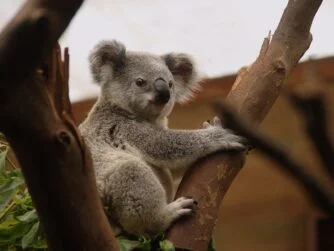
World Wildlife Day | Koalas in Danger
What is your favourite animal? In recognition of the UN's "World Wildlife Day", Liz Waid and Mike Procter look at koalas from Australia...
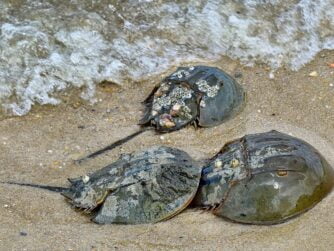
The Amazing Horseshoe Crab
Megan Nollet and Bruce Gulland tell us about the horseshoe crab and the significant role they play in the medical industry.

In recognition of the UN's "International Week of Science and Peace", Colin Lowther and Alice Irrizary talk about the DART project and how...

A Year in Space
Can a pair of identical twins help people travel to space? In recognition of "World Space Week", Bruce Gulland and Liz Waid tell about an...
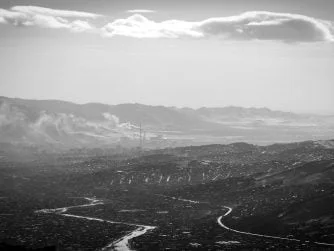
A Film About Pollution
What can people do about the problem of pollution? In recognition of UN's "International Day of Clean Air for Blue Skies" today, listen to...

The World and Nuclear Weapons
Voice 1 Welcome to Spotlight. I’m Colin Lowther. Voice 2 And I’m Liz Waid. Spotlight uses a special English method of broadcasting. It is...
- Android App
Recent Posts
- World Health Day | Why Being Kind Can Make You Healthy
- The Easter Story, Part 2
- The Easter Story, Part 1
- World Meteorological Day | The First Time Ever
- World Poetry Day | The Life and Art of William Carlos Williams
- 10 Ways to Fight Hate Series
- English Learning
- Film & Television
- Food & Drink
- Good Stories
- Health & Medicine
- International UN Days
- Relationships
- Science and Technology
- Staff Favorites
- The Environment
- The Internet
- Tips for Health Series
- Uncategorized
- Work and Business
- About Spotlight
- New to Spotlight
- Privacy Policy
- Recommended Resources
- Spotlight Advanced
- Testimonials
- We are sorry!
- Mobile Apps
- Stream on discovery+
- Program Guide
- Ghost Adventures
- Ghost Hunters
- Ghost Brothers
- Conjuring Kesha

The Dead Files
- Destination Fear
- Eli Roth Presents: A Ghost Ruined My Life
- Expedition Bigfoot
- Ghost Nation
- The Holzer Files
- Kindred Spirits
- Mountain Monsters
- Paranormal Caught on Camera
- Portals to Hell
- Amy Bruni and Adam Berry
- Destination Fear Team
- Don Wildman
- Ghost Adventures Crew
- The Holzer Files Team
- Jack Osbourne and Katrina Weidman
- Steve Dischiavi
- Watch Live TV
- Tips for Solo Travelers
- 4 Gorgeous Waterfalls
- 5 Extreme Swings
- World's 10 Best Swimming Holes
- Best BBQ in America
- Tilt! at 360 Chicago
Digital Exclusives
- Big City, Little Budget: New York
- Big City, Little Budget: San Francisco
- Bizarre Foods in the Kitchen
- One Bag and You're Out
From Our Shows
- Bizarre Foods
- Bizarre Foods: Delicious Destinations
- Booze Traveler
Expedition Unknown
- Hotel Impossible
- Mysteries at the Museum
Top Domestic
- New Orleans
- New York City
- Washington, DC
Top International
- Myrtle Beach
- Niagara Falls
- San Antonio
Explore By Region
- Asia Pacific
- Middle East & Africa
- North America
- South & Central America
Top Interests
- Amusement Parks
- Arts and Culture
- Food and Wine
- National Parks
- Health and Wellness
- Long Weekends
- Outdoor Adventure
By Traveler
- Family Travel
- Girls' Getaways
- LGBT Travel
- Solo Travel
Travel Tips
- Budget Tips
- Gear and Gadgets
- Hotels and Lodging
- Plan Your Bucket List
- Savvy Traveler
- Travel's Best
- Hunt for the Yeti
- Destination Truth
- Hunt for Extraterrestrials
Legend of the Tasmanian Tiger 03:22
What's new from trvl.

Jack Osbourne's Most Shocking Adventures 9 Photos

The Spirits in the Conjuring House Were Quick to Show Themselves Apr 7, 2023
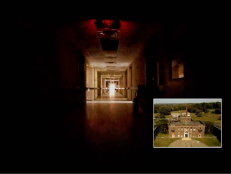
Haunted History: A Shuttered Pennsylvania Nursing Home Is Home to Dozens of Trapped Souls Mar 30, 2023

Cult Leader Charles Manson Controlled People from Behind Bars Mar 24, 2023
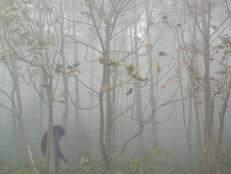
7 Best Pieces of Evidence Recovered By the Expedition Bigfoot Team Mar 14, 2023
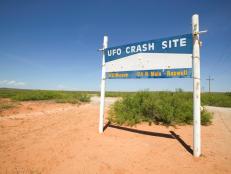
6 Things Witnesses Said About the Roswell Incident Mar 10, 2023

Creepy Urban Legends From Each State Nov 16, 2022

Unraveling The Mysterious Death of Marilyn Monroe Feb 24, 2023
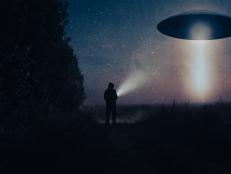
Top 5 States For UFO Sightings Feb 8, 2023
Creepy urban legends from each state 50 photos.

A Massachusetts Family Fled Their Home After Chilling Door-Camera Footage Nov 22, 2022

6 Museums That Are Home To Creepy And Mysterious Artifacts Oct 31, 2022

Settle In For A Boo Binge With The New Season Of 'Ghost Brothers: Lights Out' Oct 11, 2022

Ghost Brothers: Lights Out Returns for Season 2 on discovery+! Sep 22, 2022

Fact Or Fiction? Modern Vampire Lore May Be A Planned Misinformation Campaign Aug 22, 2022

Lindbergh Baby Kidnapping: Was The Famous Pilot Responsible For His Missing Son? Aug 22, 2022
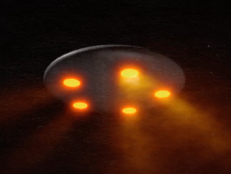
Top 6 States With The Most Alien Encounters Aug 22, 2022
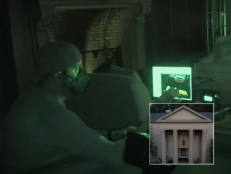
5 Unforgettable Spirits From Ghost Adventures Season 25 Sep 14, 2022

5 Craziest Moments From Fright Club Season 2 Sep 1, 2022

Four Terrifying Moments From 'Ghosts Of Devil's Perch' Aug 31, 2022
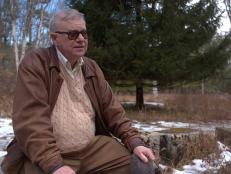
Shock Docs: The Visitors Reveals the Horrors of Alien Abduction from Best-Selling Author Whitley Strieber in Terrifying New Doc Sep 3, 2022
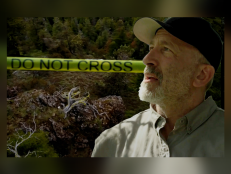
7 Of Russell Acord’s Most Heart-Pounding Moments On 'Expedition Bigfoot' Aug 12, 2022
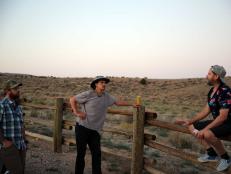
Jack Osbourne Teams up with Jason Mewes and Jamie Kennedy in the New discovery+ Special, Jack Osbourne's Night of Terror: UFOs Aug 2, 2022

Who Are The Odd Fellows? Jul 29, 2022

Boy Records Selfie With Grandma’s Ghost Jul 27, 2022

The Haunted History of San Francisco’s Westerfeld House Jul 19, 2022

An Elite Team of Paranormal Investigators Race to Help a Petrified Western Town in the New Series Ghosts of Devil's Perch Jul 19, 2022

13 Terrifying Pieces of Evidence from Ghost Hunters: TAPS Returns Jul 14, 2022

National Dive Bar Day: Is There a Portal To Hell In Memphis? Jul 7, 2022

7 Scary Homes From 'Ghost Adventures: House Calls' Season 1 Jun 30, 2022
Mysteries at the castle.

Stream discovery+
Your favorite shows, personalities and exclusive originals. All in one place.
Follow Us Everywhere
Join the party! Don't miss Travel Channel in your favorite social media feeds.
More From Travel
- Sweepstakes
- Stream Travel Channel
- Ways to Watch Travel Channel

- Privacy Policy
- Visitor Agreement
- Online Closed Captioning
- Accessibility
- Discovery, Inc.
- Do Not Sell or Share My Personal Information
- Food Network
- Travel Channel
- Cooking Channel
- Discovery.com
- © 2024 Warner Bros. Discovery, Inc. or its subsidiaries and affiliates. All rights reserved.
Expedition Unknown
Tracking Tasmania's Tiger
Information, accessibility.
Copyright © 2024 Apple Inc. All rights reserved.
Internet Service Terms Apple TV & Privacy Cookie Policy Support
Watch CBS News
Tasmanian Tiger I Sunday on 60 Minutes
- Entire Store
- Camp & Hike
- Paddlesports
- Men's Apparel & Clothing
- Women's Apparel and Clothing

Tasmanian Tiger Travel Products Available Today Up to 38% Off on Travel and More! — 48 products / 134 models — Page 1
Popular categories, 48 products in tasmanian tiger travel.
- Most Popular
- Price: Low to High
- Price: High to Low
- Avg. Rating: High to Low
- Price Per Count: Low to High
- Price Per Count: High to Low
- Most Reviewed First
- Savings % Off
- Newest First
Made in USA
Customer Reviews
- Travel Reviews
- Tasmanian Tiger Reviews
- All Customer Product Reviews
Related Links
- Unavailable Tasmanian Tiger Travel
- All Tasmanian Tiger Travel (48)
- All Deals (18)
- Blazin' Deal (6)
Navigate to:
- Travel Accessories (9)
- Electronic Travel Cases (3)
- Travel Portable Power (3)
- Truck & Auto Gear (1)
- Luggage (4)
The cicadas are coming: Check out a 2024 map of where the two broods will emerge

This spring, trillions of cicadas will emerge from the ground in multiple states, part of a rare, double-brood event that hasn't happened in over 200 years .
Two broods, or groups, or cicadas will emerge in over a dozen states: The 13-year brood Brood XIX and the 17-year Brood XIII. According to the website Cicada Mania , Brood XIX will be found in 14 states across the Southeast and Midwest, and Brood XIII will be in the Midwest. The two broods will likely overlap in Iowa and Illinois.
The two broods will begin to emerge when the soil 8 inches underground reaches 64 degrees, and are often triggered by a warm rain. They will likely emerge beginning in mid-May and last through late June.
Whether you're excited or dreading the return of cicadas in the coming months, here's where the two broods will emerge.
Can cicadas bite? How to prepare when 'trillions' are expected to descend
Broods XIX and XIII: Check out the 2024 cicada map
The two broods will emerge in a combined 17 states across Southeastern and Midwestern states, with an overlap in Illinois and Iowa. They will emerge once the soil 8 inches underground reaches 64 degrees, beginning in mid-May and lasting through late June.
The two broods last emerged in 1803 , and the next double-emergence is predicted in 2245.
What is the life cycle of a cicada?
Cicadas have the longest life cycle of any insect, waiting 13 or 17 years to emerge, but once they're above ground, things move pretty fast. Female cicadas lay eggs in trees , which drop to the ground and burrow, waiting for years to emerge, depending on their brood.
Once they emerge, adults cicadas will mate, lay millions of eggs and die, all in about five weeks.
What is the difference between annual and periodical cicadas?
Two types of cicadas are common in eastern U.S.: Annual and periodical cicadas. Annual cicadas emerge every year, while periodical cicadas emerge every 13 or 17 years, according to the U.S. Environmental Protection Agency .
Are cicadas harmful to humans or pets?
Cicadas are not harmful to humans, pets, household gardens or crops, the EPA says, and despite their overwhelming numbers, can actually provide a few environmental benefits .
They provide a valuable food source for birds or other predators, can aerate lawns, improve water filtration and add nutrients into the soil as they decompose.
Colossal Biosciences has made headlines as the de-extinction startup primed to bring back the woolly mammoth. Here’s how the business model actually works.

Remember InGen, the company at the center of Jurassic Park ?
InGen, short for International Genetic Technologies, had a seemingly insane business plan that goes something like this: Bring the Tyrannosaurus rex back from the dead, have an amazing theme park, and rule the world.
Never mind that theme park economics are tough, even before you add previously-extinct creatures into the mix. Never mind this theme park is truly in the middle of nowhere. And never mind that it’s incredibly unclear what the best-case scenario margins could possibly be.
Am I being facetious? Of course, I know Jurassic Park’s economics are beside the point. But it does raise a question: As advances in technology make the once science fiction idea of “de-extinction” closer to becoming a reality, what does it actually mean for a de-extinction company to be a real business?
That’s what I sat down to talk to Colossal Biosciences CEO and founder Ben Lamm about. Colossal has made headlines pursuing the de-extinction of the woolly mammoth, the Tasmanian tiger, and the dodo. The company’s raised more than $225 million to date, and its backers include USIT, Bold Capital Partners, Breyer Capital, Bob Nelsen, At One Ventures, and more.
“We’re currently on track for our mammoth calves in 2028,” Lamm told me on a video call recently. “Nothing is ahead of schedule, but nothing’s behind.”
And yes, I’m like everyone else, and am obsessed with the idea of seeing a woolly mammoth. But what I really wanted to know was this: How do you make money doing it? Thankfully, the answer’s not the woolly mammoth meatball —that’s a project cooked up by a different company focused on lab-grown meat. Colossal’s mammoth monetization model emphasizes two near-to-medium term efforts, and a longer-term play. Let’s start with the near-term:
“There’s consumer education, where we already get billions of media impressions,” said Lamm. “We’re doing a docuseries, and we do lots of different educational content. Transparently, those do make money…Then, the midterm is the technology companies that we spin out, as we monetize, but those take a while to get to the point where they’re successful.”
These aren’t fantasies, they’re already happening. For one, filmmaker James Reed, noted for Oscar winner My Octopus Teacher , was revealed in February to be making a docuseries about Colossal, devoting And of the earliest spinouts is Form Bio , a computational life sciences platform built at Colossal and spun out in 2022, raising a $30 million Series A led by Jazz Venture Partners (also a Colossal investor).
Then there’s the longer-term strategy, which is tied to Colossal’s already-extensive conservation efforts.
“De-extinction and species preservation are connected,” said Lamm. “Sometimes people want to separate out species preservation, conservation, and I say, no, they’re all one thing.”
Colossal’s conservation efforts are wide-ranging. For example, the startup is currently working with the University of Alaska and University of Stockholm on one of the largest-ever studies focused on radiocarbon dating mammoths. Likewise, Colossal last year joined the BioRescue group working to save the northern white rhino from extinction. And, there’s the Victorian grassland earless dragon—a miniscule Australian lizard believed to be extinct in 1969. The lizard was recently rediscovered in the wild, and Colossal’s set up a breeding and release colony with the Melbourne Zoo devoted to the fetching little reptile.
Lamm even envisions getting a piece of the carbon credit market, which is projected to be as big as $2.4 trillion by 2027, according to some estimates . “In the long-term, if we get to sustainable populations of, say, the Thylacine [Tasmanian tiger] in southern Australia, we’ll get government subsidies, carbon credits, biodiversity credits.”
Lamm is no dodo and fully realizes that to many ears this all still seems far-fetched—but he isn’t worried about it. “We have a view that it’s not our job to persuade: It’s our job to educate and be transparent,” he said.
Some of Colossal’s critics have even switched gears and joined the company. Take Colossal’s new Chief Science Officer Beth Shapiro, a famed evolutionary molecular biologist who originally wanted to see Colossal publishing more scientific papers and doing deeper research on what the ecological impacts of rewilding mammoths would be like (a first study is now in peer review). This year, Shapiro took a leave of absence from UC Santa Cruz to join Colossal.
“I’m not worried about it not working,” said Lamm. “Of all the things that keep me up at night, that’s not one.”
Asking Andy… In this week’s edition of Ask Andy, Bonobos cofounder Andy Dunn tackles a question about how to retain a company’s culture in a remote work era with characteristic candor: “I think for some startups, particularly if they are pre-product-market fit, we can and should reconsider the in-office model. Not three days a week. Five days a week.” Read the whole column here .
See you tomorrow,
Allie Garfinkle Twitter: @agarfinks Email: [email protected] Submit a deal for the Term Sheet newsletter here .
Joe Abrams curated the deals section of today’s newsletter.
VENTURE DEALS
- Collaborative Robotics (Cobot) , a Santa Clara, Calif.-based developer of practical collaborative robots for industries like manufacturing, healthcare, and retail/e-commerce, raised $100 million in Series B funding. General Catalyst led the round and was joined by Bison Ventures , Industry Ventures , Lux Capital, and existing investors Sequoia Capital , Khosla Ventures , and others.
- FloQast , a Los Angeles, Calif.-based financing and accounting operations platform, raised $100 million in Series E funding. ICONIQ Growth led the round and was joined by BDT & MSD Partners , WiL , Meritech Capital , and Sapphire Ventures .
- Auradine , a Santa Clara, Calif.-based provider of blockchain, security, AI, and other web infrastructure solutions, raised $80 million in Series B funding from StepStone Group , Top Tier Capital Partners , MVP Ventures , Maverick Capital , and others.
- Novidea , a London, U.K.-based cloud-based enterprise insurance management platform, raised $80 million in Series C funding from HarbourVest Partners , Battery Ventures , Cross Creek , Israel Growth Partners (IGP) , KT Squared , and JAL Ventures .
- Yoshi Mobility , a Nashville, Tenn.-based automotive mobility services provider, raised $26 million in Series C funding from General Motors Ventures , Bridgestone Americas , Universal Motors Agencies , Shikra Limited , and others.
- Proxima Fusion , a Munich, Germany-based startup building fusion power plants, raised €20 million ($21.7 million) in seed funding. redalpine led the round and was joined by Bayern Kapital , DeepTech & Climate Fonds , the Max Planck Foundation , and existing investors.
- Udio , a New York City-based AI-powered music production platform, raised $10 million from a16z , will.i.am. , and others.
- MODE , a San Mateo, Calif.-based AI assistant for factories, construction sites, and other work sites, raised $8.8 million in Series B funding from SBI Investment , True Ventures , JR East Startup , and Daiichi Jitsugyo .
- GTM Buddy , a Durham, N.C.-based AI-powered platform designed to guide sales reps through the sales process, raised $8 million in Series A funding. Archerman Capital and Leo Capital led the round and were joined by Neon Fund and existing investor Stellaris Venture Partners .
- PVML , a Tel Aviv, Israel-based data access platform for enterprises, raised $8 million in seed funding. NFX led the round and was joined by FJ Labs and Gefen Capital .
- PeerDB , a San Francisco-based data movement platform for PostgreSQL, raised $3.6 million in seed funding. 8VC and Y Combinator led the round and were joined by Wayfinder Ventures , Webb Investment Network , Flex Capital , Rogue Capital , Pioneer Fund , Orange Collective , and angel investors.
- Veremark , a London, U.K.-based employee background screening company, raised $3 million in pre-Series B funding. Samaipata and Stage 2 Capital led the round and were joined by ACF Investors and Vulpes Investment .
PRIVATE EQUITY
- BearCom , backed by Siris Capital Group , acquired The Surveillance Shop , a Calgary, Canada-based provider of security solutions for small, medium, and enterprise customers. Financial terms were not disclosed.
- Behrman Capital acquired Vista Apex , a Racine, Wisc.-based manufacturer of consumable dental products for preventative oral hygiene, endodontics, and restorative dentistry. FInancial terms were not disclosed.
- eHouse Studio , backed by Periscope Equity , acquired Commerce12 , a Rockville, M.D.-based e-commerce agency. Financial terms were not disclosed.
- Osceola Capital recapitalized Trauma Services , a Mansfield, Mass.-based provider of biohazard cleaning and remediation. FInancial terms were not disclosed.
- RESA Power , a portfolio company of Investcorp , acquired AVATT , an Edmonton, Alberta-based provider of transformer installation, service, maintenance, and other services and Mountain States Transformer Service , a Pocatello, Idaho-based provider of transformers. Financial terms were not disclosed.
FUNDS + FUNDS OF FUNDS
- Lone View Capital , a Los Angeles, Calif.-based private equity firm, raised $850 million for its first fund focused on software, information services, and tech-enabled businesses.
This is the web version of Term Sheet, a daily newsletter on the biggest deals and dealmakers in venture capital and private equity. Sign up for free.
Latest in Newsletters
- 0 minutes ago

Elon Musk wants to make Grok AI an option for X premium users to compose tweets

Memecoins are bad for investors—and for the crypto industry

Quantum hacking is a looming privacy threat. Companies should start worrying now

How Fishwife built a brand that outlasted a pandemic craze in the ‘dusty’ $2.6 billion U.S. canned fish category

Is it time to think bigger than benefits? Employers keep offering mental health perks when they might need to rethink their entire workplace

Exclusive: Underscore VC closes its $58 million third fund as the firm completes a generational transfer
Most popular.

Workers at Elon Musk’s Boring Co. accidentally dug too close to a supporting column of the Las Vegas monorail last year, forcing officials to briefly halt service

In-N-Out’s billionaire heiress says she stood in line for 2 hours to land a job at her own store when she was just a teenager to shake the ‘stigma of being the owner’s kid’ and ‘earn respect’

$2.3 billion hedge fund manager on his move from New York to Florida: ‘I know of no business that has generated long term success by driving away its highest paying customers’

Air Canada pilots land a Boeing 737 in Idaho after another in-flight emergency

The ‘Oracle of Wall Street’ expands on why the ‘crisis of the American male’ will send home prices crashing 30%: Gaming, rampant loneliness, and not enough single women homebuyers

Meet a Missouri dad who went from a ‘full-on bigot’ to fighting bathroom bans on behalf of his 16-year-old daughter: ‘When it was my child, it just flipped a switch’
US company hoping to bring back the dodo and the mammoth - but here's why it won't be like Jurassic Park
Dallas-based firm Colossal Biosciences is attempting to "de-extinct" the mammoth, the dodo, and the Tasmanian tiger, using genetic engineering.

News reporter @thejournojames
Monday 8 April 2024 06:25, UK

The idea of scientists bringing pre-historic creatures back to life with some clever DNA trickery might sound familiar to fans of the 1993 Hollywood blockbuster Jurassic Park.
But for Colossal Biosciences - a company that hopes to reintroduce extinct species such as the dodo and the mammoth - it is more than just a film script.
It's a reality - and one that could be just years away.
"We've got all the technology we need," says Ben Lamm, chief executive of the firm, based in Dallas, Texas .
"It is just a focus of time and funding. But we are 100% confident [we can bring back] the Tasmanian tiger, the dodo, and the mammoth."
The science behind the project is simple: Work out the genes that make an extinct animal what it is, and then replicate those genes using the DNA of a close existing relative.
"It's almost reverse Jurassic Park," says Mr Lamm, speaking to Sky News.
"In the film, they were filling in the holes in the dinosaur DNA with frog DNA.
"We are leveraging artificial intelligence and other tools to identify the core genes that make a mammoth a mammoth and then engineering them into elephant genomes."

That is the technical part.
But there are some other practical hurdles for Colossal to overcome, namely how, once you have mammoth cells, do you birth a real-life mammoth?
The answer, according to Colossal, is in the womb of an Asian elephant.
But it is a process that could take nearly two years, even after they have worked out how to do it.
"[Each of the] different projects [the mammoth, dodo, and Tasmanian tiger] have different challenges - the mammoth is really around gestation - which is around 22 months," says Mr Lamm.
"The dodo gestation is pretty great - we are using surrogate chickens. The hardest part is cultivating the primordial germ cells."

'Feeling good about 2028'
So after around 4,000 years of extinction, when could we see the return of the mighty mammoth - a creature that fell victim to human hunting and the changing conditions brought about by the end of the last Ice Age.
"We are well into the editing phase," says Mr Lamm.
"We don't have mammoths yet, but we still feel very good about 2028."
Away from the lab, led by Eriona Hysolli, Colossal's head of biological sciences, there are other issues to overcome - including where the newly returned species will live once they are born.

Mr Lamm says the company is already working with local governments, conservation groups, indigenous people groups, private land lowers, and the public at large, to prepare for the animals to be returned to their natural habitat.
"Our ultimate goal is to put all the animals we make back into the wild," he says.
'New tools in the fight' to protect nature
Colossal says the work is not just about rewilding animals previously lost to the world.
The company is currently working with Dr Paul Ling at Baylor College of Medicine in Houston, Texas, to create a vaccine to eradicate the deadly EEHV virus - which kills around 20% of baby elephants each year.
It is also working closely with the University of Alaska and the University of Stockholm on radiocarbon dating of American mammoths as well as sequencing their genome - the largest study of its type ever undertaken.
Be the first to get Breaking News
Install the Sky News app for free

Read more: Colossal Biosciences announces project to bring back the dodo Scientists unveil 240-million-year-old reptile likened to 'Chinese dragon'
Mr Lamm also hopes that, through Colossal's research, the company can tackle issues facing the world today, including a drop in biodiversity.
"I think we have a duty to this planet that we've been given - we are tending towards a loss of up to 50% biodiversity if we don't do anything," he says.
"Modern conservation is great, but we need new tools in the fight.
"Work on de-extinction goes hand-in-hand with species preservation, and if Colossal makes a couple of technologies, then maybe it will provide those tools."
'Jurassic Park helps people understand our work'
As for the Jurassic Park comparisons, well, there is one small issue, according to Mr Lamm.
In the Steven Spielberg-directed epic, the scientists use DNA embedded in fossilised mosquitoes in amber combined with frog DNA to bring dinosaurs back to life.

"Amber is not a good holder of DNA," Mr Lamm says.
"But it's a very entertaining movie and I think Jurassic Park made a lot of people interested in science. I saw it when I was younger and I was like: 'Wow genetics is cool'.
"It did a lot to explain to the masses that genetic engineering is a thing and something that can be used in powerful ways, and I do think more people understand Colossal because of that."
The company is also working on a film of its own, and, luckily for everyone, it's not a dystopian thriller like Jurassic Park.
It has teamed up with award-winning director James Reed, a specialist in nature films, to document its "de-extinction" work.
"It's really exciting. When you are doing anything bold, it is important to communicate and be transparent, and there's nothing more transparent than having cameras around all the time," says Mr Lamm.
Related Topics

IMAGES
VIDEO
COMMENTS
Tasmanian tigers were 39 to 51 inches (100 to 130 centimeters) long, and the tail added 20 to 26 inches (50 to 65 cm) to its length. They weighed 33 to 66 lbs. (15 to 30 kilograms), according to ...
AT ABOUT NINE o'clock on a 1993 spring night, a truck was travelling eastwards along the Lyell Highway through the Tasmanian Wilderness World Heritage Area. Half a kilometre past the Franklin River bridge, the driver* negotiated a bend and then a rise. At the top of the rise, his headlights lit up the dead-straight roadway as bright as day.
Hi! I'm Margie: a mum, grandmother, animal lover and a community nurse in Aboriginal Health. In my spare time I love to draw, especially Tasmanian animals. I have spent the last few years working on illustrations for a children's picture book that feature our wonderful native wildlife. I have been lucky enough to get the support of Tasmanian company Forty South Publishing, and my dream is ...
Margie Kirk's fantastic artwork and beautiful words combine to take readers on a tour of 14 Tasmanian towns where thylacines make friends with the native wildlife - from wombats in Waratah, echidnas in Eddystone, wedge-tails over Wineglass Bay to possums in Port Arthur, quolls in Queenstown and swans in Strahan. "We see so many children who can instantly identify a tiger, a lion or even a ...
Travelling Tasmanian Tigers. Margie Kirk's fantastic artwork and beautiful words combine to take readers on a tour of 14 Tasmanian towns where thylacines make friends with the native wildlife - from wombats in Waratah, echidnas in Eddystone, wedge-tails over Wineglass Bay to possums in Port Arthur, quolls in Queenstown and swans in Strahan.
Size. Up to 130 cm long, including a stiff tail of about 50cm; about 25kg in weight (males were slightly larger than females) Few other Australian animal species have as much mystery surrounding them as the thylacine. Also known as the Tasmanian tiger - because it's a carnivore with striped markings - much of the intrigue about this ...
Travelling Tasmanian Tigers $ 25.00 Margie Kirk's fantastic artwork and beautiful words combine to take readers on a tour of 14 Tasmanian towns where thylacines make friends with the native wildlife - from wombats in Waratah, echidnas in Eddystone, wedge-tails over Wineglass Bay to possums in Port Arthur, quolls in Queenstown and swans in ...
The National Film and Sound Archive (NFSA) has released never-before-seen remastered and colourised footage of the last known Tasmanian tiger. The original black-and-white footage, shot in 1933 by Australian zoologist and naturalist David Fleay, was recently scanned by the NFSA to 4K archival standards and sent to colourisation experts in France.
The thylacine ( Thylacinus cynocephalus) is the only species of the marsupial family Thylacinidae to exist into modern times. It is commonly referred to as the Tasmanian tiger or Tasmanian wolf , but being a marsupial, it is neither a tiger or a wolf in any true sense. It is, however, an excellent example of parallel evolution - a process which ...
The thylacine (/ ˈ θ aɪ l ə s iː n /; binomial name Thylacinus cynocephalus), also commonly known as the Tasmanian tiger or Tasmanian wolf, is an extinct carnivorous marsupial that was native to the Australian mainland and the islands of Tasmania and New Guinea.The thylacine died out in New Guinea and mainland Australia around 3,600-3,200 years ago, prior to the arrival of Europeans ...
Travelling Tasmanian Tigers is a wonderful book highlighting the adventures of the travelling Tasmanian Tigers, visiting various animals in beautiful places around Tasmania. The launch will include a Welcome to Country, the launch and thanking of sponsors, and introduction of the author and illustrator/artist, Margie Kirk, by Kingston Library. ...
Thylacines, also known as Tasmanian tigers or Tasmanian wolves, began to dwindle until the last-known member of the species—an animal named Benjamin kept at a zoo—died in his cage in 1936.
Travelling Tasmanian Tigers Margie Kirk Forty South Publishing Hardcover, 32 Pages Margie Kirk's fantastic artwork and beautiful words combine to take readers on a tour of 14 Tasmanian towns where thylacines make friends with the native wildlife - from wombats in Waratah, echidnas in Eddystone, wedge-tails over Wineglass Bay to possums in Port Arthur, quolls in Queenstown and swans in Strahan.
The last captive Tasmanian tiger died at Hobart Zoo in 1936. If scientists were to succeed in reviving the animal it would mark the first "de-extinction" event in history, but many outside experts ...
Although Tasmanian wolves (also known as Tasmanian tigers or thylacines) are considered extinct, their original prehistoric range was thought to extend throughout much of mainland Australia and Papua New Guinea. ... because the anatomy of the Tasmanian wolves is thought to be better suited for travelling long distances in order to kill prey ...
Discover TY the Tasmanian Tiger with your Dinki-Di Dingo travel guide, Shazza. From sandy beaches to the great Aussie outback, come along for an adventure of...
The world has just over three minutes of black-and-white footage with which to remember the extinct thylacine, better known as the "Tasmanian tiger."Now, another 21 seconds have emerged after ...
Using the Tasmanian tiger DNA, Pask hopes to find what its genome looked like. Voice 1. He also hopes to do the same for another animal called the fat-tailed dunnart. The fat-tailed dunnart is a mouse-like marsupial that eats meat like the Tasmanian tiger did. The dunnart has DNA that is a lot like the Tasmanian tiger's.
After their encounter with the Dodo Bird, the Wild Kratts decide to try out Aviva's Time Trampoline again. This time to visit with the extinct Tasmanian Tig...
Tracking Tasmania's Tiger. Josh investigates sightings of a supposedly extinct marsupial in Tasmania. See Tune-In Times.
S3 E9: Josh ventures to Australia's island state of Tasmania to investigate sightings of a supposedly extinct marsupial known as the Tasmanian Tiger. Reality Jan 25, 2017 40 min. TV-PG.
Jon Wertheim reports from the Australian island of Tasmania on the mysterious thylacine or Tasmanian tiger - an apex predator not seen since last century, but renowned through local folklore. Sunday.
4 models Tasmanian Tiger 55L Modular Trooper Pack As Low As (Save Up to 14%) $379.95 On Sale. 3 models Tasmanian Tiger Urban Tac Pack 22 $149.00 (Save $14.05) $134.95. 3 models Tasmanian Tiger Modular Sling Pack 20 L $169.00 (Save 11%) $149.95 On Sale. Showing 48 of 48 products (142 models) reset.
This spring, trillions of cicadas will emerge from the ground in multiple states, part of a rare, double-brood event that hasn't happened in over 200 years. Two broods, or groups, or cicadas will ...
That's what I sat down to talk to Colossal Biosciences CEO and founder Ben Lamm about. Colossal has made headlines pursuing the de-extinction of the woolly mammoth, the Tasmanian tiger, and the ...
Dallas-based firm Colossal Biosciences is attempting to "de-extinct" the mammoth, the dodo, and the Tasmanian tiger, using genetic engineering.